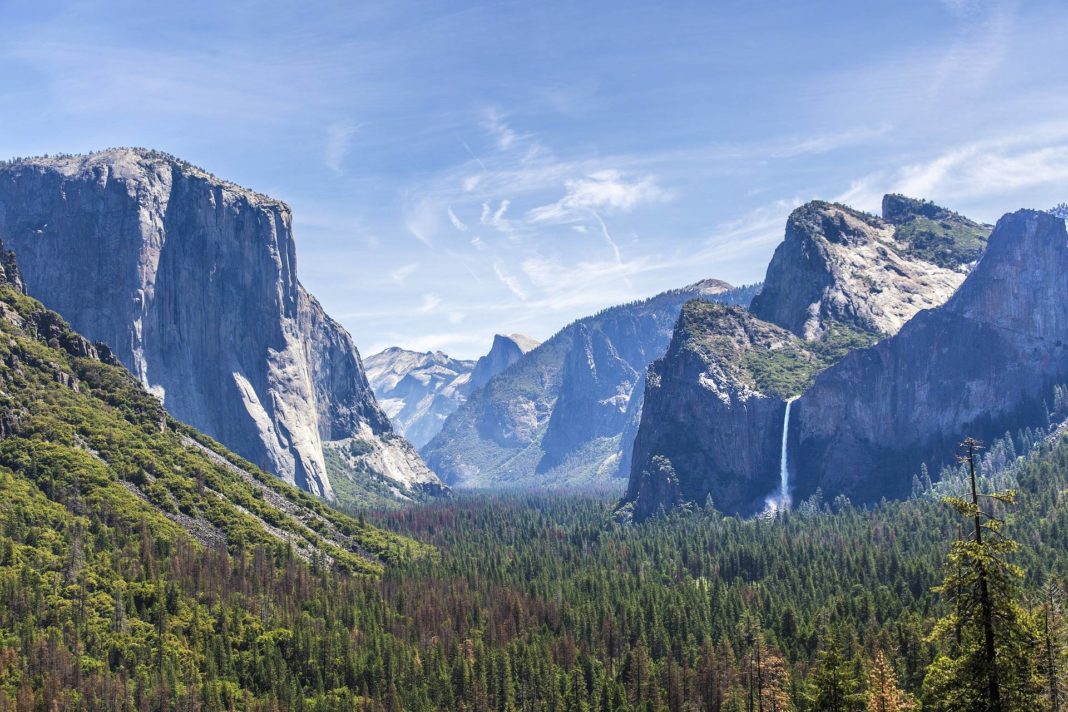The United States of America has a significant number of National Parks spread around the country. The National Park Service is administered these parks and can be established only by a joint resolution of the US Congress. President Ulysses S. Grant declared Yellowstone as the first National Park in 1872; since then, a multitude of other locations have been added to the list, and the United States now has 59 National Parks. To be designated a National Park, a natural area must meet certain criteria, such as having an exceptional region of natural beauty, an uncommon ecosystem, or an abundance of recreational opportunities.
These parks are enormously different due to the varied terrain of the United States. Yosemite National Park, for example, is home to sweeping forest-covered valleys and granite formations such as El Capitan, while Arches National Park is home to over 2000 sandstone arches and a breathtaking desert landscape. These parks are a critical component of American culture and tradition, and the country takes enormous pleasure in the diversity and beauty of its numerous protected areas.
Map of National Park in the USA
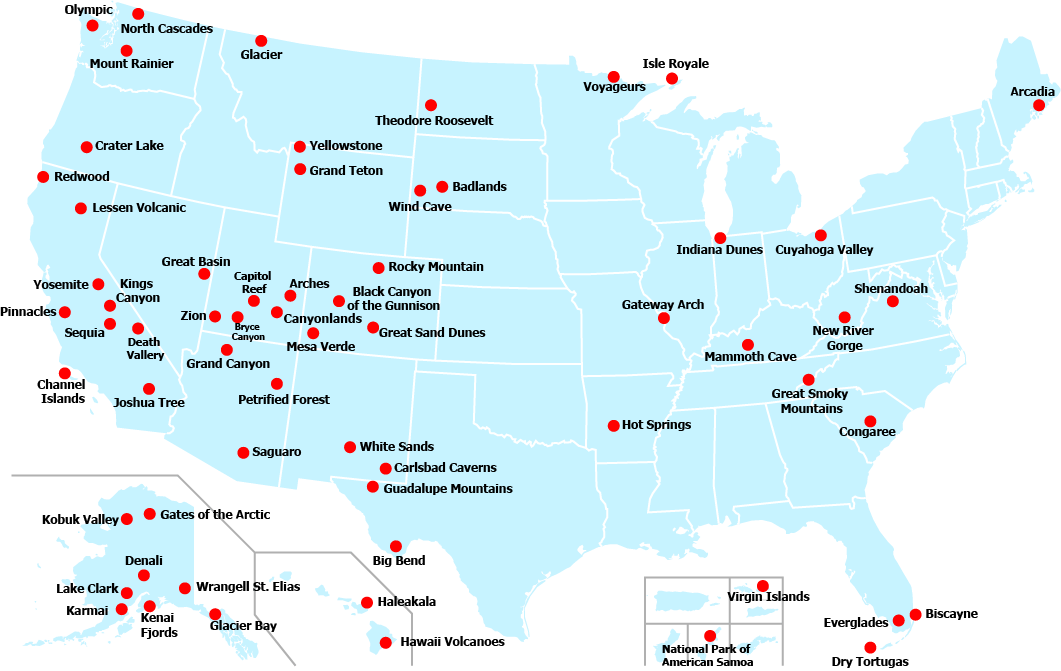
1. Great Smoky Mountains
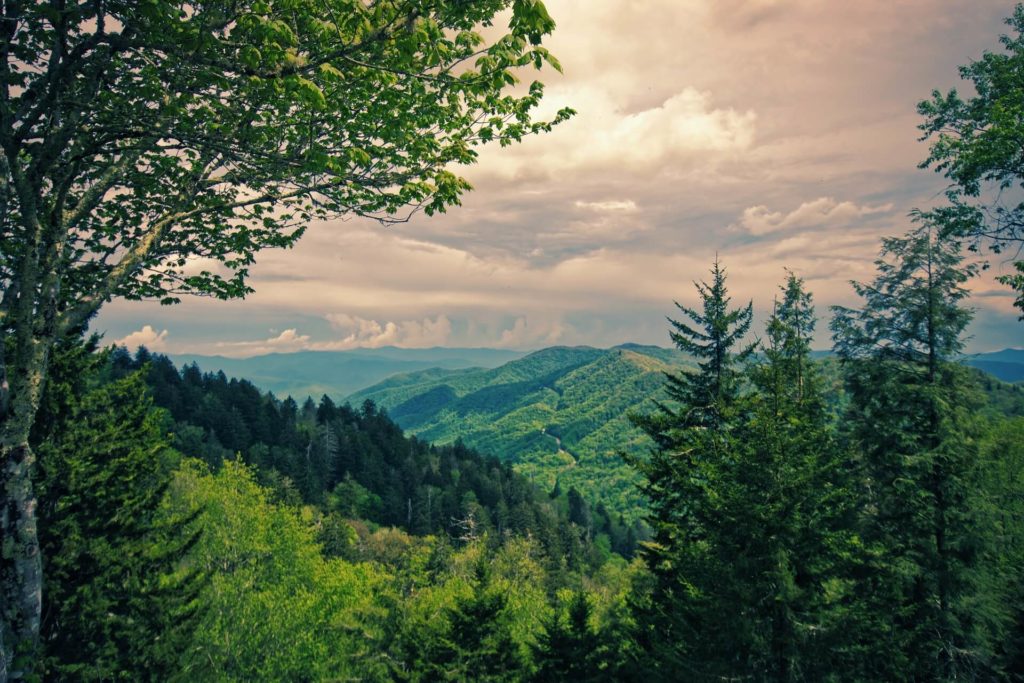
The 522,427-acre Great Smoky Mountains National Park is located in both Tennessee and North Carolina, with the border running through the heart of the park. Human settlements have a lengthy history in the highlands, dating all the way back to prehistoric Paleo Indians and nineteenth-century European settlers. Today, the park attracts more than 10 million visitors annually — it is one of the few free national parks in the US – who come to enjoy beautiful drives to Cades Cove or along the Roaring Fork Motor Nature Trail, as well as outdoor activities such as hiking, biking, and fishing. Bring a picnic and embark on breathtaking treks to Abrams or Rainbow Falls, or cycle the Cades Cove Loop on Wednesday and Saturday mornings when the road is closed to traffic. Visit the Cades Cove Visitor Center to learn about the park’s history, visit the historic gristmill and Cable Mill, or stop by the Sugarlands Visitor Center to observe wildlife exhibits, watch a park video, and purchase unique gifts in the gift shop.
2. Grand Canyon National Park (Arizona)
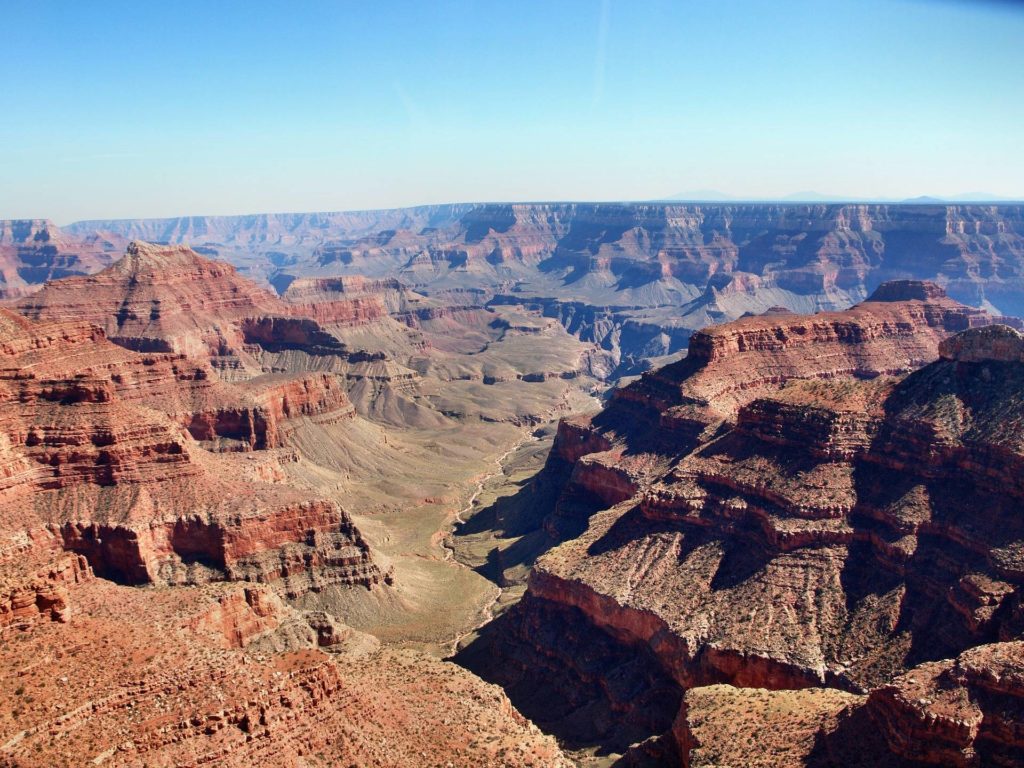
This canyon is worthy of the “grand” designation, yet “grand” simply doesn’t begin to describe it. This gigantic gap in northern Arizona is certainly a natural wonder, measuring over 277 river miles in length, up to 18 miles in breadth, and a mile deep. The Grand Canyon has been expanding for six million years, aided by the great Colorado River, and for ages, people from all over the world have journeyed to gaze out over its crimson and orange splendor. The Grand Canyon, which is managed by the National Park Service and is officially listed as a UNESCO World Heritage site, awes its nearly 6 million annual tourists.
However, if you’re looking for a more private encounter with Mother Nature, you should be prepared: The Grand Canyon can get quite congested at times. The South Rim is particularly popular with sightseers and hikers, as it is home to Grand Canyon Village and the well-worn Bright Angel Trail. This is the side with the most amenities. To escape the congestion, make your way to the North Rim. This is the area to camp in the woods and go on strenuous hikes. Additionally, try signing up for a helicopter excursion for an unparalleled view of the canyon.
3. Yosemite National Park (California)
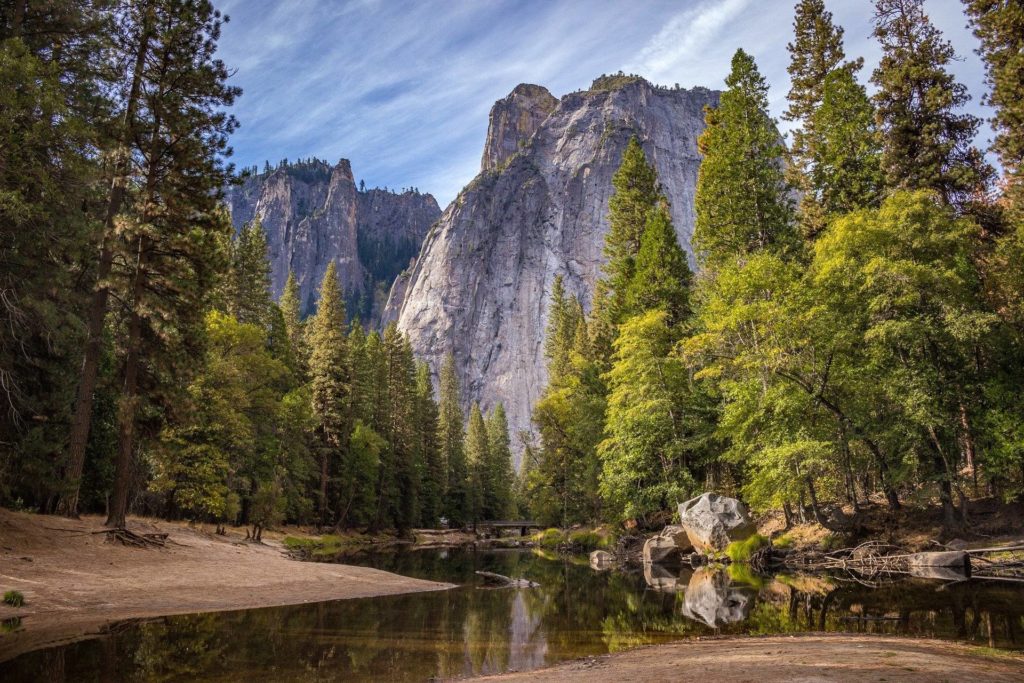
Upon your arrival at Yosemite, you’ll begin to realize what other people have enjoyed for thousands of years. They were the American Indians who lived in Yosemite Valley, who planted the first crops there approximately 10,000 years ago. You will be touched by a feeling of discovery while you are in the midst of stunning natural beauty, infinite wilderness, towering cliffs, and placid surroundings.
You’ll be following in the footsteps of the first non-native settlers of the West, who arrived in California for the California Gold Rush in 1850 and returned home. Some of these individuals were rewarded with riches, while others learned of a place so vast and amazing that words fail to describe it.
The earliest travelers, on horseback, rode the deepest into the Yosemite Valley to tell others about it. As a result, this was the first year-round inhabitants in the area by the mid-1860s due to the presence of deer, bear, and fish.
4. Rocky Mountain National Park (Colorado)
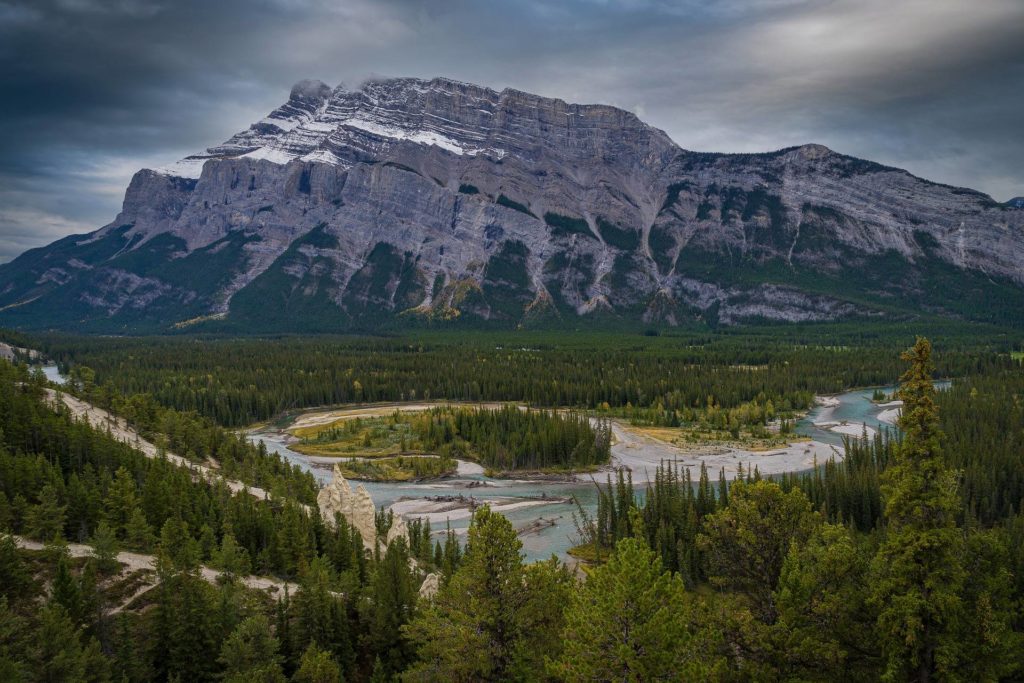
Rocky Mountain National Park is the country’s ninth-largest national park, and it has around 4 million yearly visitors compared to the more than 11 million visitors who visit Great Smoky Mountains National Park each year. Even in Colorado, which is a quite hilly place, RMNP towers 12,183 feet into the sky. Most of the fun is in trekking its 350-mile-long trail system, which features beautiful glacial lakes, stands of vibrant wildflowers, patches of meadow, and even some elk or bighorn sheep. Visitors may be more likely to feel woozy because of the thinner atmosphere, yet even jaded visitors experience amazement and wonder after just a few days of breathing in the clean mountain air.
Visitors can munch some homemade ice cream, take a creepy tour of the Stanley Hotel, or simply wander through the charming village of Estes Park when it’s time to go back down to Earth (or at least down to a height of 7,500 feet). Furthermore, Boulder and Denver are each within an hour of each other, but both are also very close to several other popular tourist destinations, such as Vail and Rocky Mountain National Park.
5. Zion National Park (Utah)
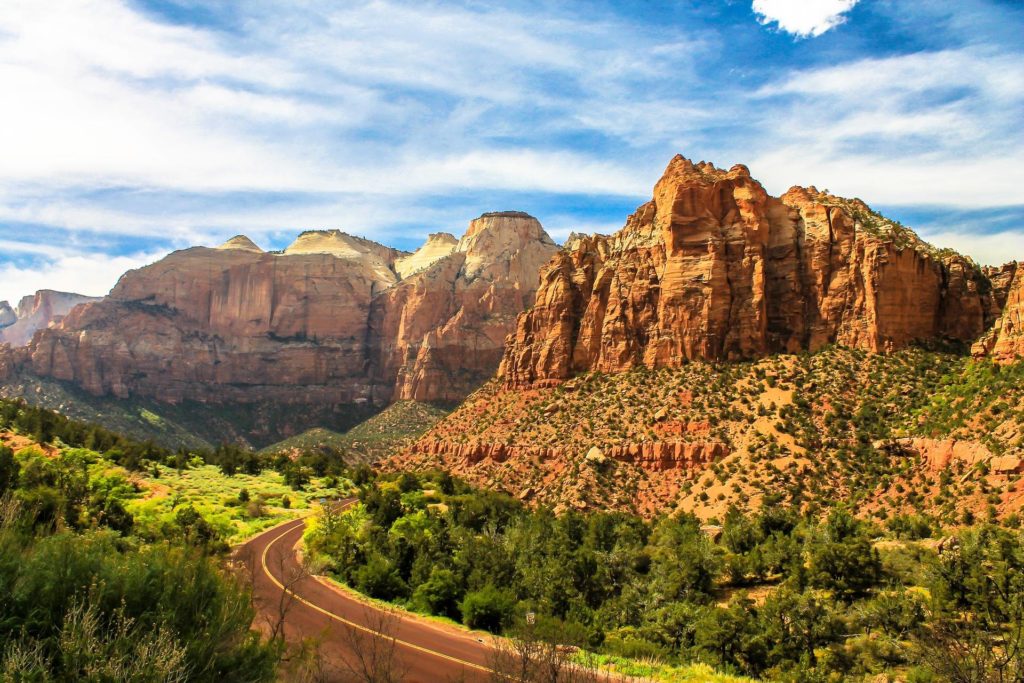
Due to the word “refuge,” in the Hebrew language, Zion National Park – which is situated in the southwest part of Utah – has turned into a noisy place as it once was. A record-breaking number of 4.3 million visits were recorded in the park in 2016, up 17% from the previous high in 2015. It almost seems as if tourists discovered an unknown, captivating place and can’t get enough of it, as long as they have the opportunity to get their waterborne adventure on in Zion National Park by swimming across the Virgin River or hiking the easier but still beautiful Angels Landing. Additionally, the fact that the sky is blanketed with stars provides a relaxing ending to a day that included many active activities. It’s good to spend a moment back in reality to assimilate all the beauty you’ve encountered, but the 166-mile drive from Las Vegas or the 308-mile travel from Salt Lake City is just about right in that respect.
6. Yellowstone National Park
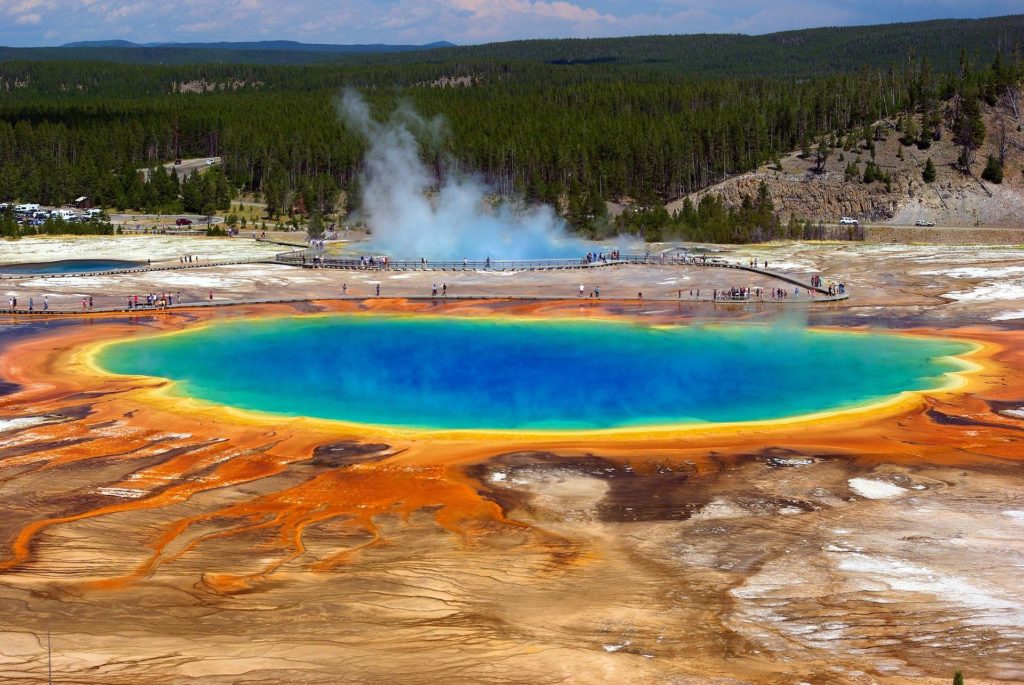
Yellowstone National Park offers beautiful peaks and natural lakes for outdoor enthusiasts. A dizzying array of multicolored pools swirls around hot springs, green woods meander over wide meadows, and steaming geysers erupt from craggy geyser pools. Unspoiled natural beauty is abundant in Yellowstone, and because of this it is no surprise that people questioned John Colter when he first described the geothermal wonders in 1807. To say now that the park is outstanding is not something to be doubted. Keep an eye out for grizzly bears, which may be present if you travel the area’s 3,000 square miles of mountains, canyons, geysers, and waterfalls.
Despite being visited by over 4 million people every year, Yellowstone will most likely remain under the radar unless you are staying at Old Faithful all day. More than 2.2 million acres of Yellowstone are in the northwest corner of Wyoming, infiltrating the border of Idaho and Montana, which makes it possible to tour all of it with minimal distractions. Spend time enjoying the scenery of Yellowstone Lake and Mammoth Hot Springs over the course of two days. Of course, a lot of time should be spent outside, specifically exploring different places, such as the West Thumb Geyser Basin’s natural hot springs and the plethora of wildlife located along the Lewis River Channel and Dogshead Loop. With a seemingly endless supply of trails and wildlife-watching options, getting started could feel overwhelming. However, remember: You always have a chance to return.
7. Olympic National Park
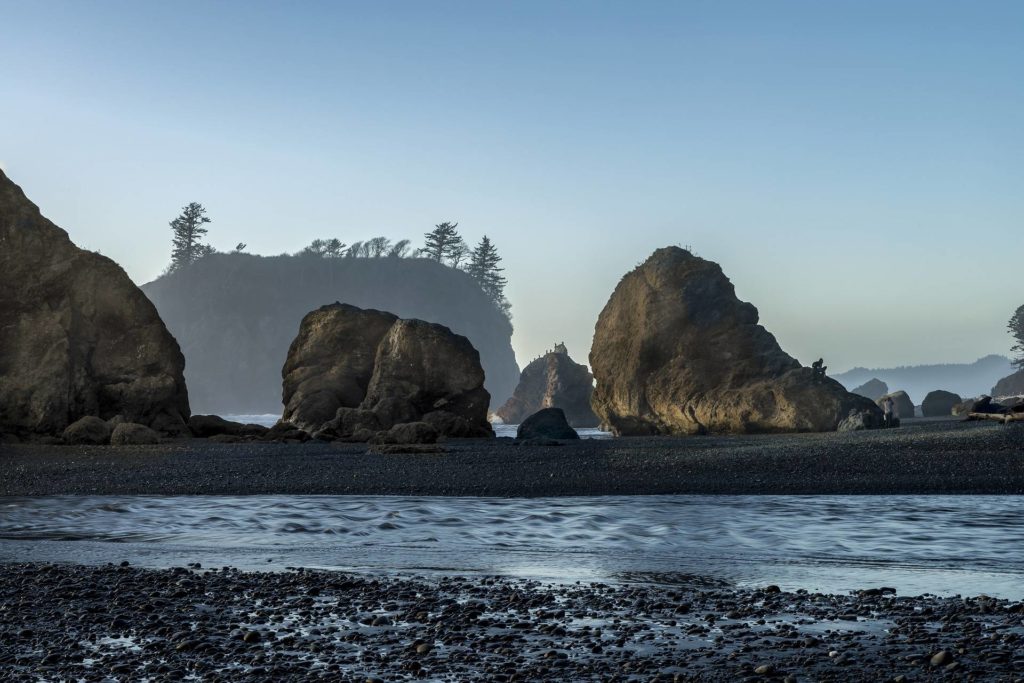
Whether you like to hike, look at the stars, or kayak, there is something for you in Washington State’s Olympic National Park, which is on the Olympic Peninsula. Anchored by more than one million acres of mountains, rainforests, and coastal shores, visitors can explore diverse terrain while learning about old-growth temperate rainforests, glacial summits, and more than 70 miles of wild coastlines.
The park has had its roots in efforts to preserve the forests of the Northwest dating back to 1897, when President Grover Cleveland set aside the Olympic Forest Reserve as a preservation area. After Roosevelt Elk populations had been in steady decline, Roosevelt set aside a section of the national forest reserve as the Mount Olympus National Monument in order to preserve the population. It was not until 1938 that President Franklin Roosevelt formally gave the park its national park status. A World Heritage Site and an International Biosphere Reserve have both been designated today.
8. Acadia National Park
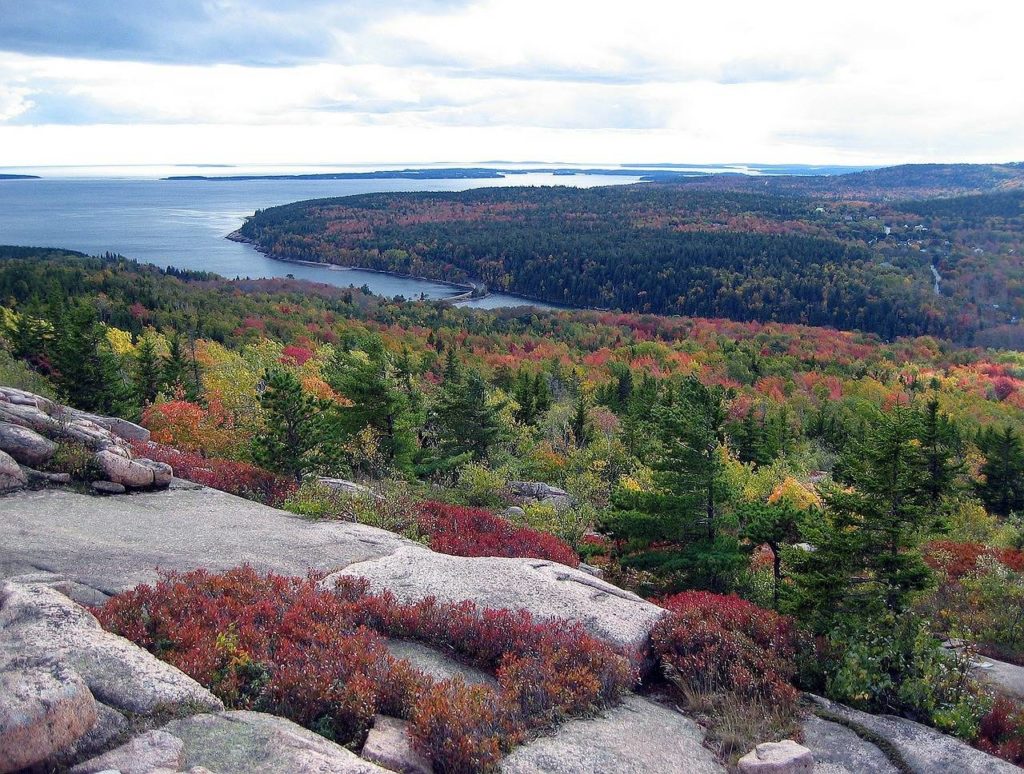
In Acadia National Park, vacationing is like being a pioneer; you’re one of the first people on your new land. Each trail leads to pristine, untouched land, where your camera will inevitably find an amazing view. On the rocky shore, wavy waves crash onto jagged granite slabs topped with spruce trees. Harbor seals sun themselves on abandoned chunks of bedrock off the coast, peregrine falcons scream down at you from the skies, and nearby sea lions, sea otters, and other seals cavort among the boulders. Old and rugged horse trails and carriage roads wind around the lakes and ponds in the forest, calling out for exploration. To be clear, the park is for everyday people who enjoy spending time outside, with lots of activities like horseback riding, biking, hiking, and even rock climbing designed to make you feel exhilarated.
When you select the option to be provided free rein to explore Acadia’s more than 47,000 acres, you’re given access to all of the trails and natural attractions the park has to offer, all for a very affordable fee. Bar Harbor is located on Mount Desert Island in the northeastern part of the island, and makes a great place to spend a short break from the great outdoors.
9. Grand Teton National Park
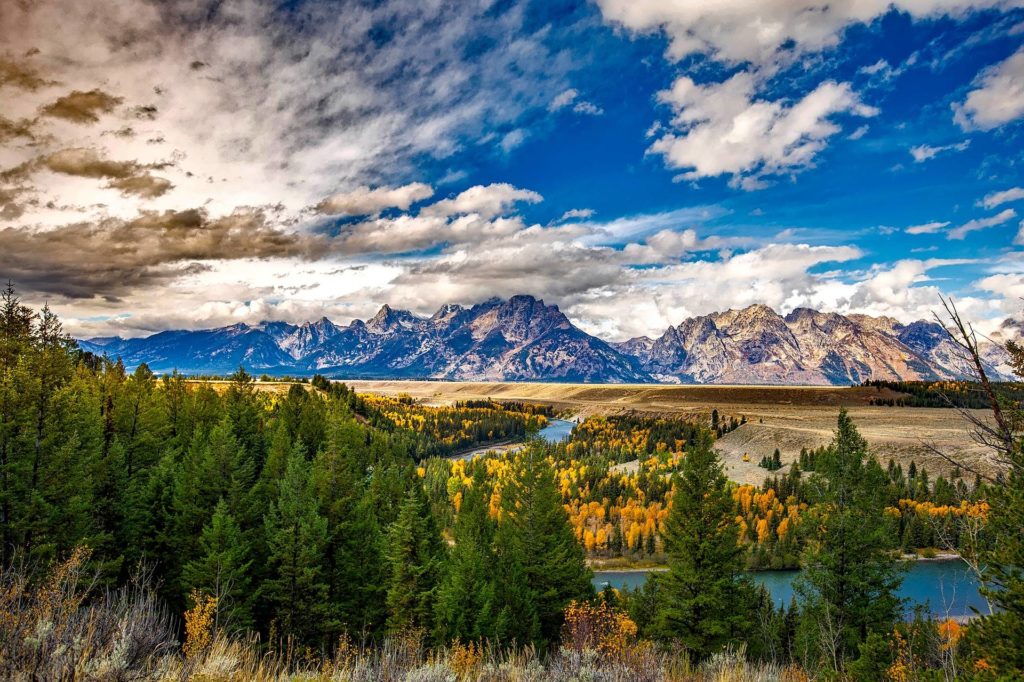
With its snow-topped, jagged peaks, the Teton Mountains loom above the Jackson Hole Valley in Wyoming’s Grand Teton National Park. There are photo opportunities all over, with sights like the Grand Teton (13,770 feet) and the glittering Jenny and Jackson lakes reflecting the mountains in their depths. The park is for mountaineers and photographers, but it’s also for families, picnickers, and others. All abilities welcome during the peak summer season, when these trails offer trail treasures like secluded waterfalls and awe-inspiring views of the Tetons. While all of this is taking place, Snake River kayakers, rafters, and those who just want to float find scenic locations to enjoy, while history buffs who want to learn about the 19th-century past of this part of the West search out old Mormon Row and Menors Ferry districts.
With nearly 500 square miles of parkland, there are a variety of wildlife species, including black bears, grizzlies, moose, antelope, and bison, as well as some, such as the aspens, that provide autumnal visitors with breathtaking sights. Also, vacationers who want to add another national park to their trip can instead go to Yellowstone, which is a short drive to the northwest of Grand Teton. If you decide to visit both parks, you’ll save $10 on combined admission.
10. Glacier National Park
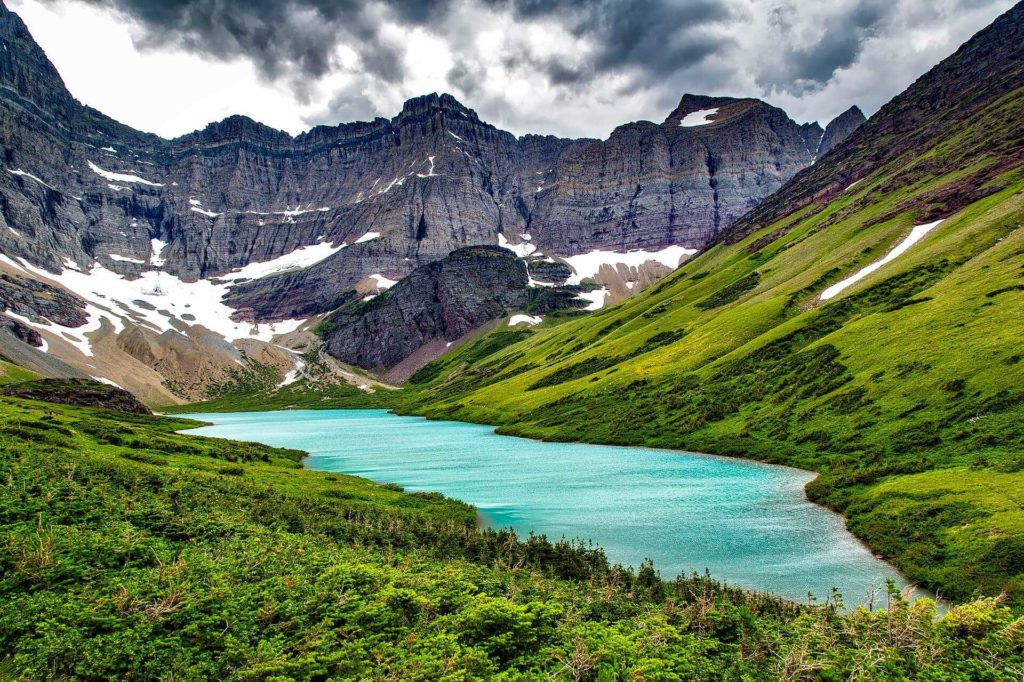
It is also called the Crown of the Continent, as it sits at the headwaters of the three major streams that flow into the Pacific Ocean, the Gulf of Mexico, and Hudson Bay. The park has several hiking trails that are great for beginners, such as the short Trail of the Cedars, as well as challenging trails, such as the long Grinnell Glacier Trail. While this has the additional benefit of harboring over 700 lakes, numerous waterfalls, and two mountain ranges spread across over a million acres, the wildlife that inhabits the park has the protection of two mountain ranges.
Its geography is beautiful, but it also holds a lot of history. This scenic route is part of the US National Historic Landmark, and its thrilling ride and scenic views both contribute to its significance. Many of the resort lodges, chalets, and hotels are also located on the National Register of Historic Places, due to their construction by the Great Northern Railway early in the 20th century. Is there any interest in visiting a UNESCO World Heritage site? You’ll also find it in Waterton-Glacier International Peace Park: the Waterton-Glacier International Peace Park.
11. Joshua Tree National Park
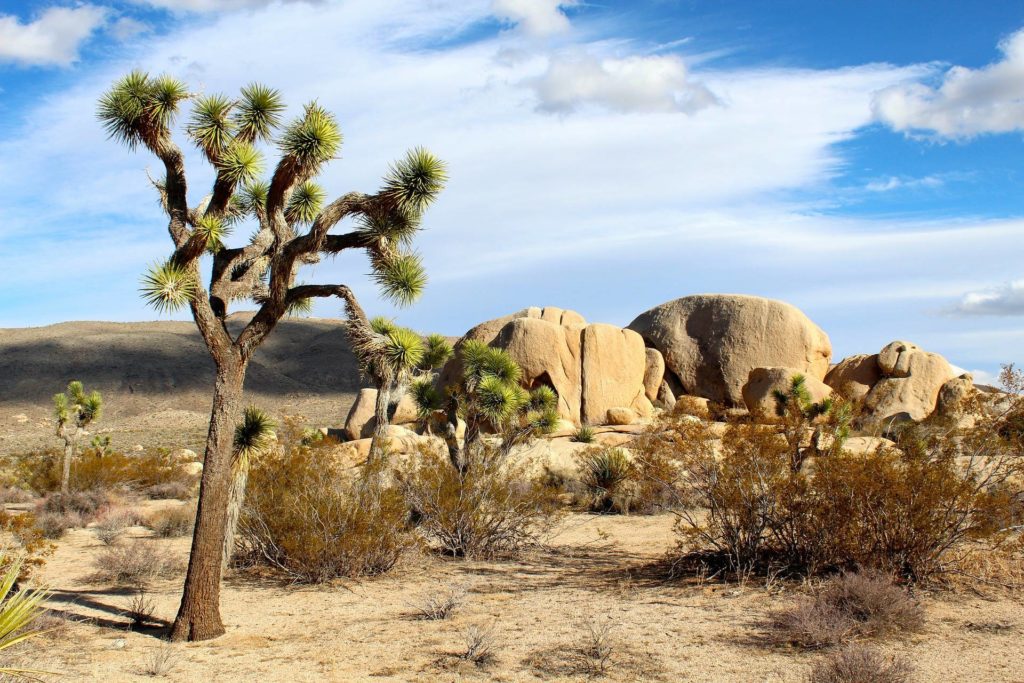
Although Joshua Tree National Park’s landscape consists of rugged mountains, gold mining ruins, and desert plains dotted with unique and unusual trees, it is a unique and wonderful place. An ecological crossroads, where the Mojave Desert meets the Colorado Desert, can be found in the park. They include the palm tree that is also known as the valley palm and the date palm, which is also known as the valley date palm (actually a type of yucca). The beauty here radiates throughout the day, with bright sunsets melting into vast starry nights.
12. Cuyahoga Valley National Park
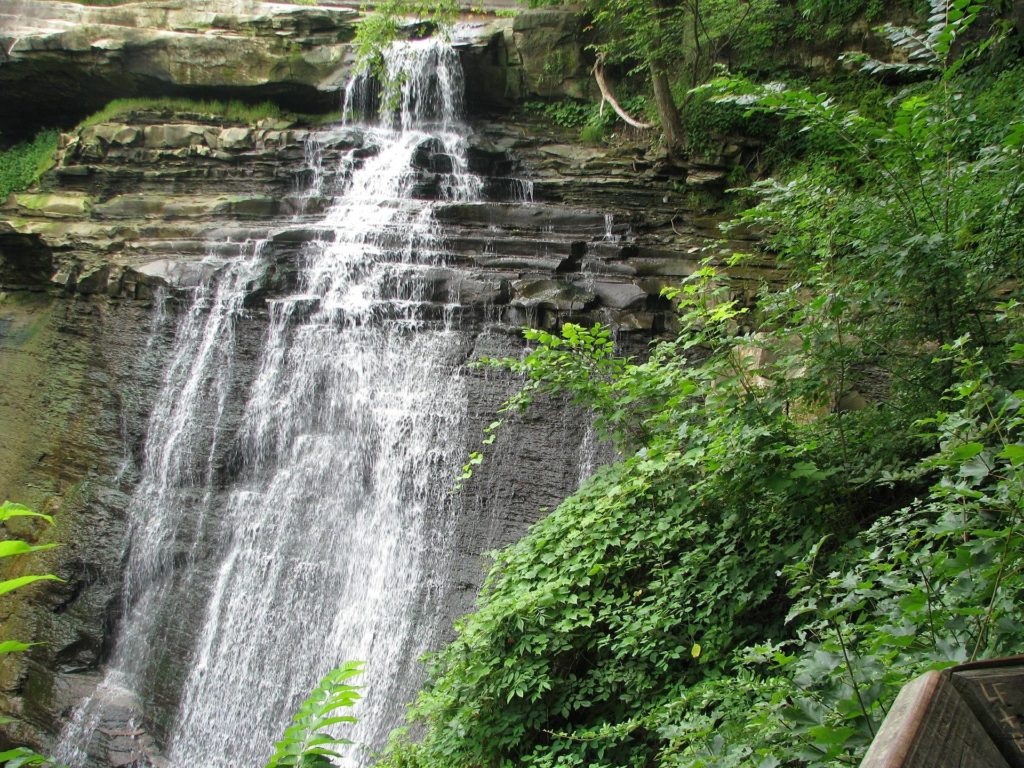
Cuyahoga Valley is defined by the word “surprise.” People who find it surprising that a national park is located in northeastern Ohio in between Cleveland and Akron will be delighted to learn that it is there. The Cuyahoga Valley was declared a national park only in 2000.
Visitors find even more discoveries: Trails that wind through remote gorges that appear completely detached from the surrounding area; views of hillside woodlands where trees overshadow the city; wetlands where beaver, herons, and wood ducks live.
13. Bryce Canyon National Park
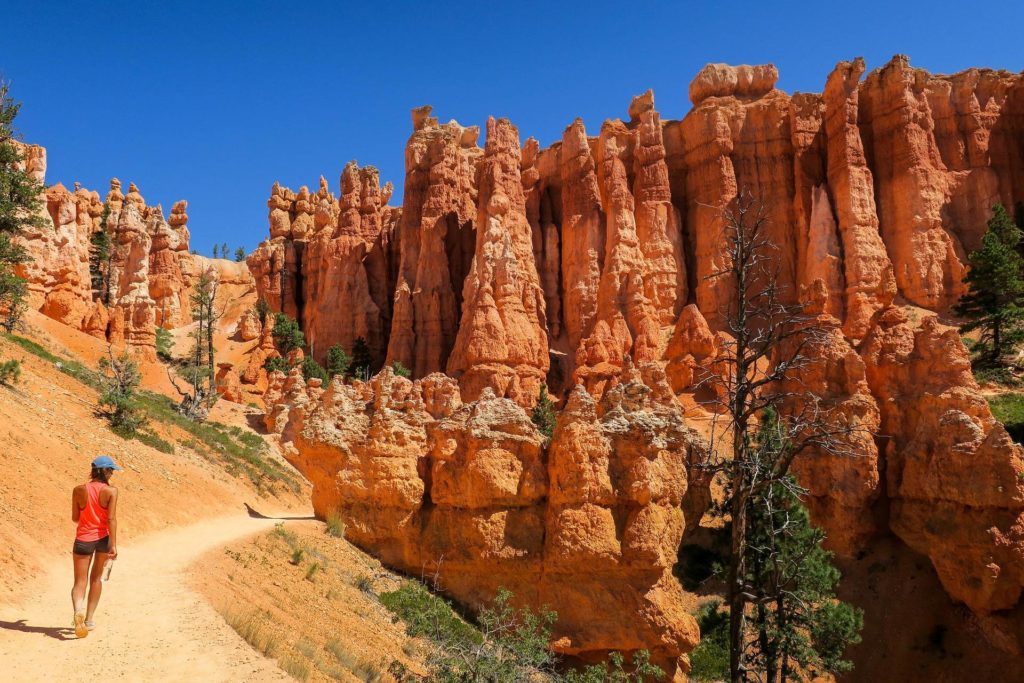
Bryce Canyon National Park is situated in southwestern Utah and occupies a spectacular area that consists of twelve amphitheaters, or horseshoe-shaped canyons, on a mountain eroded into an amphitheater-shaped plateau. Both children and adults enjoy exploring the slot canyons, windows, fins, and the tall, skinny spires that are called hoodoos because they are whimsical formations of limestone rock formed by erosion and rain. There are more hoodoos (geomorphic features) in Bryce Canyon National Park than in any other place in the world.
In 1875, a Scottish immigrant, Ebenezer Bryce, settled in the area with his family. The park was named after him. As time went on, the people who lived in the Bryce Canyon canyon started calling their canyon “Bryce’s Canyon” and the name stuck, even after they moved to Arizona in 1880. The park is located in the spectacular Bryce Canyon at elevations that can reach more than 9,115 feet above sea level. This offers magnificent panoramic views of three states and around 200 miles of visibility. The park’s relative lack of light pollution allows for clear stargazing. On the contrary, you can see 7,500 stars on a clear night when the moon is not out.
14. Hawaii Volcanoes National Park
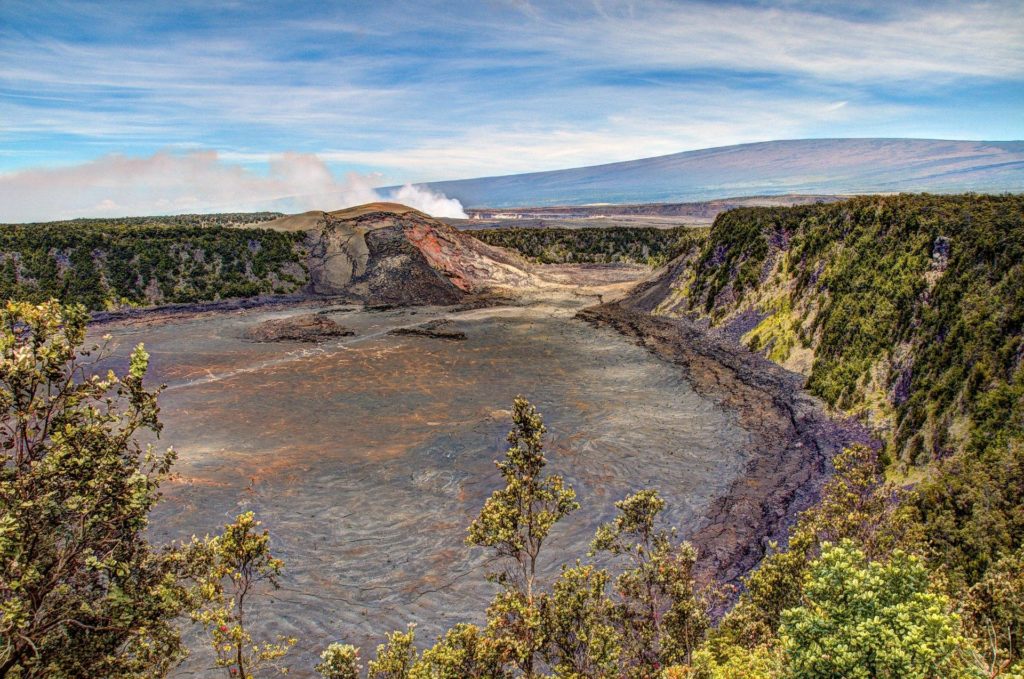
Gazing at the vast volcanoes on the Big Island of Hawaii, you have the feeling that you’ve set foot on another planet.
Lava flows, several of which are still active, spread for miles in a moon-like landscape. As waves get bigger, they spray large amounts of sea spray up to hundreds of feet into the air along the wild, craggy coastline. During an ascent of the world’s largest single mountain, endangered birds waddle across the path. When the opportunity presents itself, witness the long-awaited eruption of lava from a lake of molten rock into the ocean or of spectacular columns of incandescent rock arching into the sky above one of the planet’s rare lava lakes.
Two well-known volcanoes, one of which is tall and the other which is in a constant state of activity, frame this large national park. Volcanic and climatic forces shaped our planet on the Big Island. Vulcanism rules the day, but there are a few pockets of rainforest and grassland habitat in which endangered Hawaiian flora and fauna thrive.
15. Arches National Park
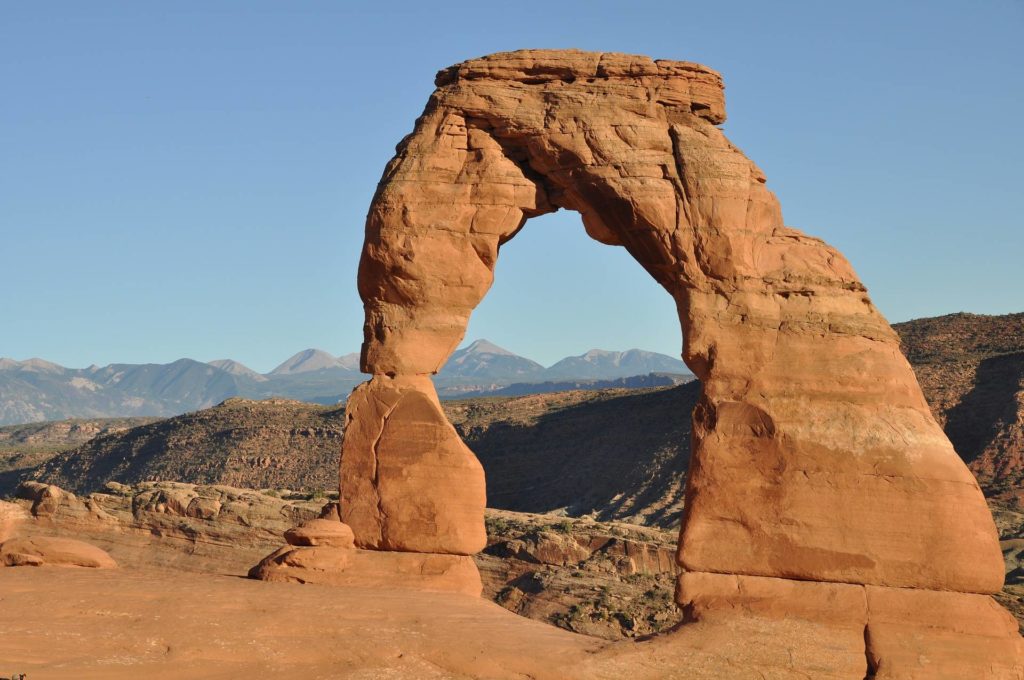
It’s almost like you’re visiting another planet when you visit Arches National Park because there are thousands of natural sandstone arches, red rocks, and landforms in amazing configurations, and the light changes continuously. Capturing the park’s enchanting vistas as the sun rises and sets provides a unique opportunity for photographers, who are especially attracted to shooting the arches’ play of light and shadow. However, Arches National Park is more than just a scenic photography location.
There are over 26 miles of scenic road and hikes to suit every level of fitness found at the Moab Mountain Bike Park, which is 5 miles northwest of Moab, Utah. Walkers have numerous options available, from quick walks of no more than 20 minutes to Balanced Rock and the Double Arch, to challenging treks to the Fiery Furnace and Delicate Arch, all in the comfort of the wilderness. While enjoying stunning views of the Milky Way, head to the Colorado Plateau to find some of the darkest skies in the contiguous 48 United States.
16. Hot Springs National Park
A wonderful oddity among the 59 United States’ national parks is Hot Springs National Park, which has been designated a national park solely for the purpose of serving as a spring of healing for visitors.
In the real sense of the word, there is no such thing as a “hot springs park.” A little-known fact is that it is the smallest national park in terms of land area, but it is also the country’s biggest tourist attraction, which has nothing to do with the environment or wildlife. These baths date from the end of the 1800s and early 1900s.
Because of an act of Congress in 1922, Hot Springs was designated a national park rather than a national monument. It is really almost secondary to why the location was selected as a national park; it has just over 5,000 acres of forested land and lakes. Hot Springs National Park is the most urban of all of the national parks due to the majority of the land being located within the city limits.
17. Shenandoah National Park
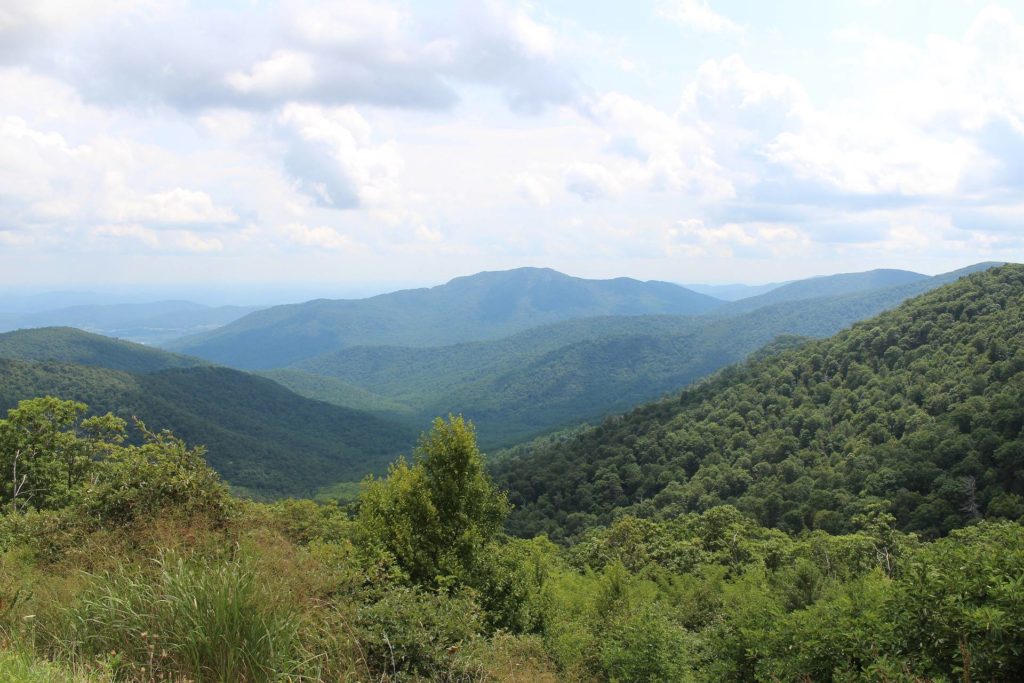
Through Shenandoah National Park’s patchwork quilt of wilderness and pastoral landscapes, which extends for more than a hundred miles along the Blue Ridge Mountains of western Virginia, the history of nearly 300 years is embodied. Though the park is in the middle of the Shenandoah Valley in the west and the Piedmont region in the east, it covers nearly 600 miles of hiking trails, nearly 80,000 acres of designated wilderness, and 500 miles of wooded hollows and breezy summits. This wonderful setting is only 75 miles from Washington, D.C.
18. Mount Rainier National Park
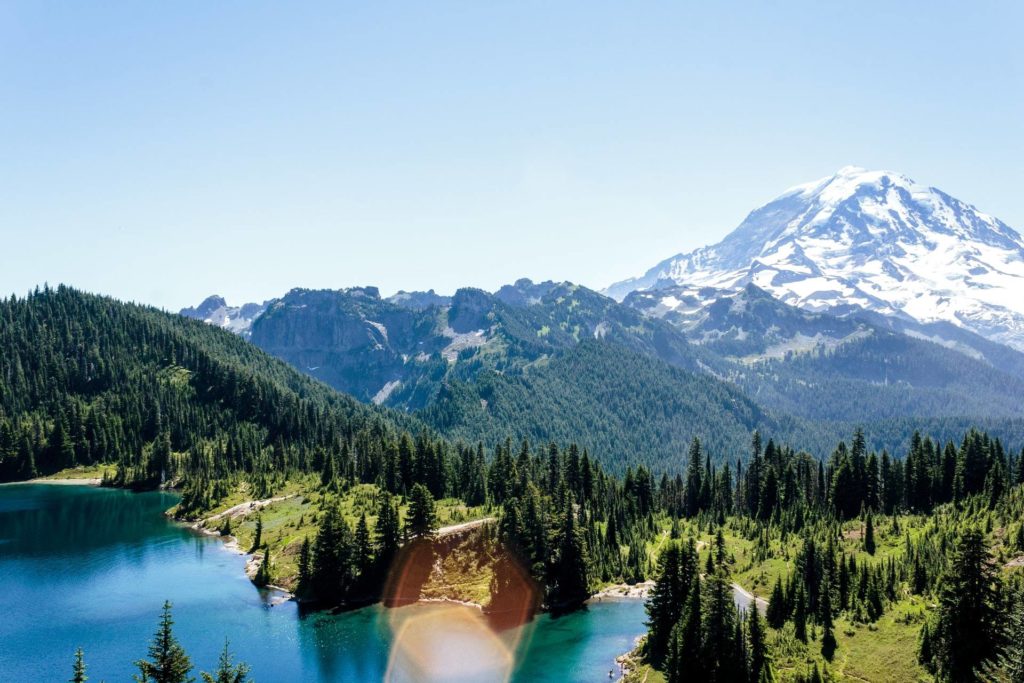
It was established in 1899, making it the fifth national park in the United States. Despite the 14,410-foot-tall active volcano for which it is named, this landmark dominates the area. Mount Rainier is the tallest and most glaciated Cascade Range volcano, and the continental United States’ 25th-named glacier is located on its slopes. Hundreds of people each year successfully climb the volcanoes to enjoy the contrast of the steaming volcano to the icy rivers that flank the side of the mountain.
To see it is not necessary to be a mountaineer. With an elevation of 6,400 feet, you can drive to the summit of Sunrise, the highest point in the park accessible by car. Additionally, go to subalpine meadows in the summer to admire the stunning displays of wildflowers. The park is always changing due to the weather, so in the winter, many activities that take advantage of that include skiing and snowshoeing.
19. Death Valley National Park
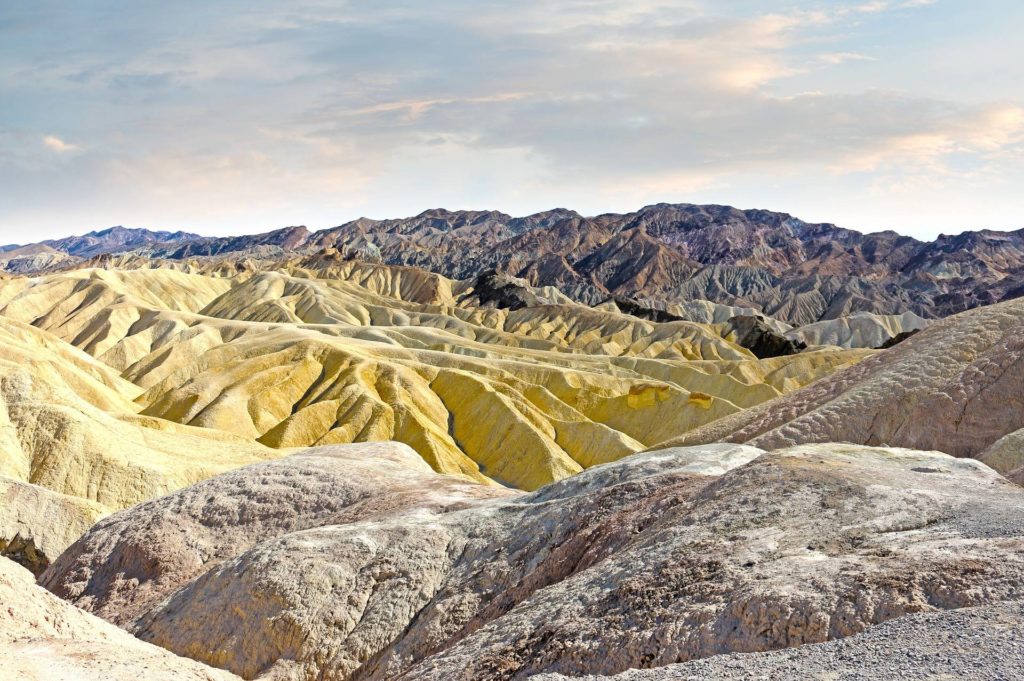
However terrible its name may be, Death Valley National Park is one of the most amazing places on earth because of its endless array of rugged and magnificent landscapes, featuring hundreds of miles of deep, rippling sand dunes, exotic and native animals, colorful rocks and canyons, and remarkable peaks that rise 11,000 feet above the surrounding areas.
Those who visit Death Valley National Park will also discover a wreath of relics from the harsh early history of the area’s settlers and natives, including ancient Shoshone foot trails, metal ore mines, charcoal kilns, and ghost towns.
20. Haleakalā National Park
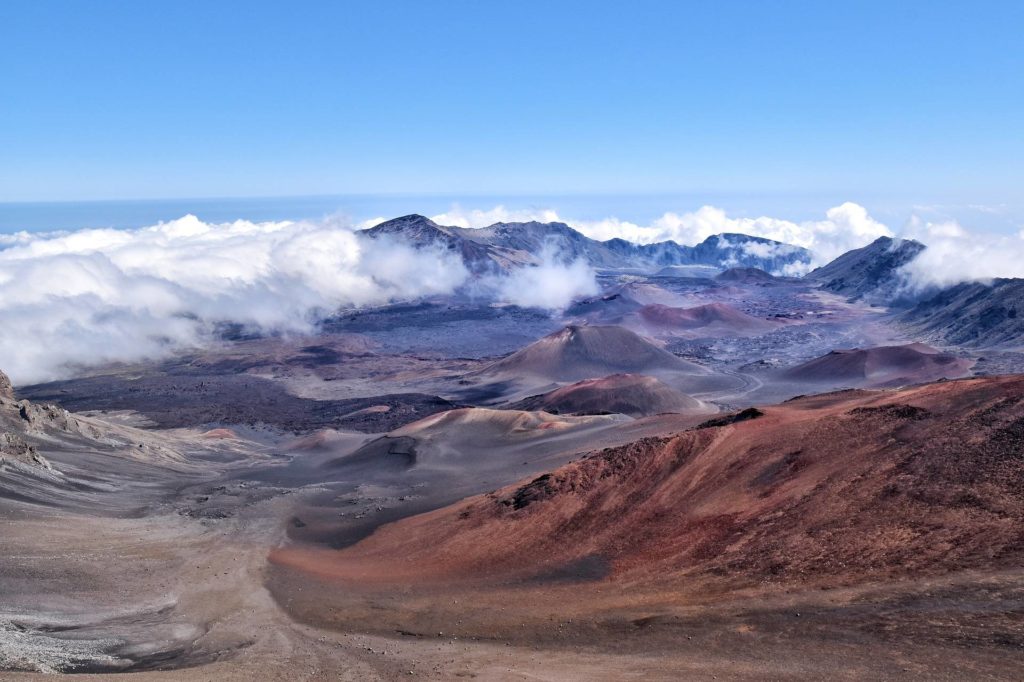
Haleakalā, a Hawaiian volcano located on the island of Maui, rises to a height of 10,023 feet. The majority of Maui (about three-quarters of the entire island) is formed of the rock mass, and this rock mass plays a large role in the island’s environment, culture, and geology.
The volcano is important to many different cultures, especially the Hawaiians. Haleakalā National Park was created in 1961 to protect this active and beautiful volcanic landscape for future generations.
21. Sequoia National Park
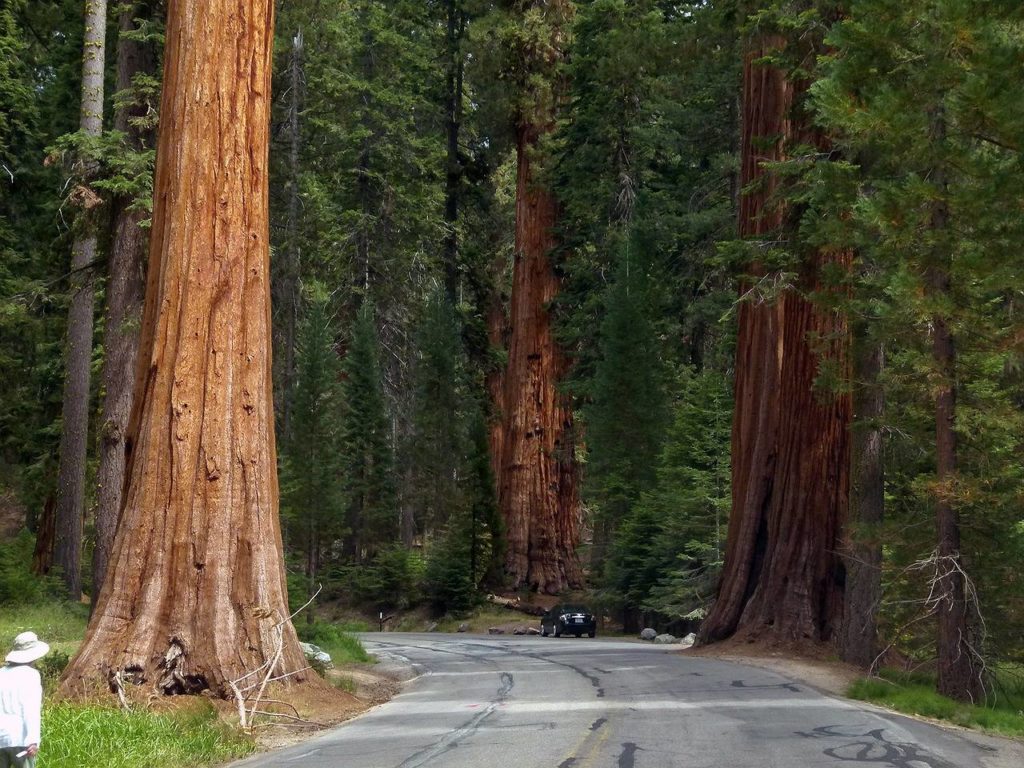
It’s a particularly magical experience to awaken in Sequoia National Park surrounded by giant sequoia groves. Additionally, some smaller species like red-tailed hawks and yellow-bellied marmots are found there. Start your day by visiting Sequoia National Park, which is full of beautiful natural wonders.
People who want to enjoy a mountain lodge vacation in California will prefer Wuksachi Lodge because of its prime location, comfortable guest rooms, dining options, lounge, retail, and ski shops. Hardy hikers and those looking for the unique will be drawn to Bearpaw High Sierra Camp, which is hidden inside Sequoia Park’s backcountry eleven and a half miles from the Great Western Divide. In addition to Bearpaw, several dozen Sequoia National Forest campgrounds can be found in the area.
Everything is better when you wake up in Sequoia National Park.
22. Capitol Reef National Park
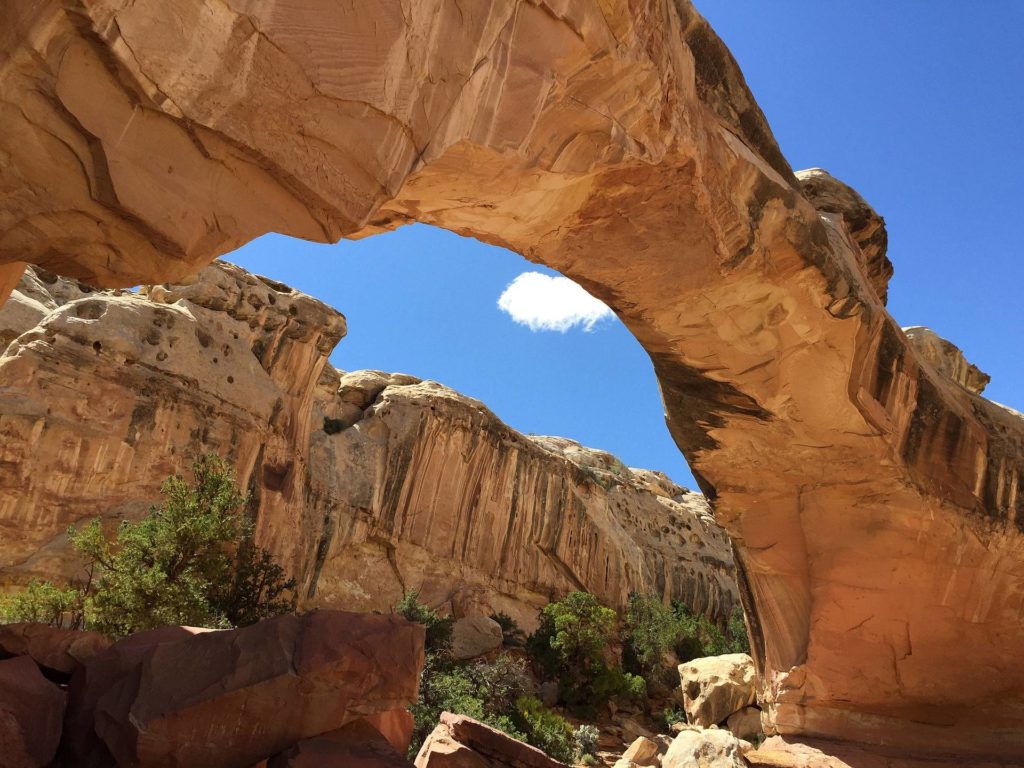
The beautiful, intricate beauty of Capitol Reef National Park is located in south-central Utah. A 60-mile (97 km) north–south line represents the length of the park, but an average of 6 miles (9.7 km) wide. This vast desert landscape is open all year long and has the highest levels of visitation in the months of May through September.
The Wayne Wonderland is located in Wayne County, Utah, and was named by two local boosters, Ephraim P. Pectol and Joseph S. Hickman, in the 1920s. At the outset, the canyons, ridges, buttes, and monoliths in the area around Capitol Reef National Park were designated a national monument by President Franklin D. Roosevelt on August 2, 1937. Although the area was opened to the public, it was not until 1950 that the park was upgraded to national park status. State Route 24 was built through the Fremont River Canyon in 1962, and this helped facilitate road access.
23. Badlands National Park
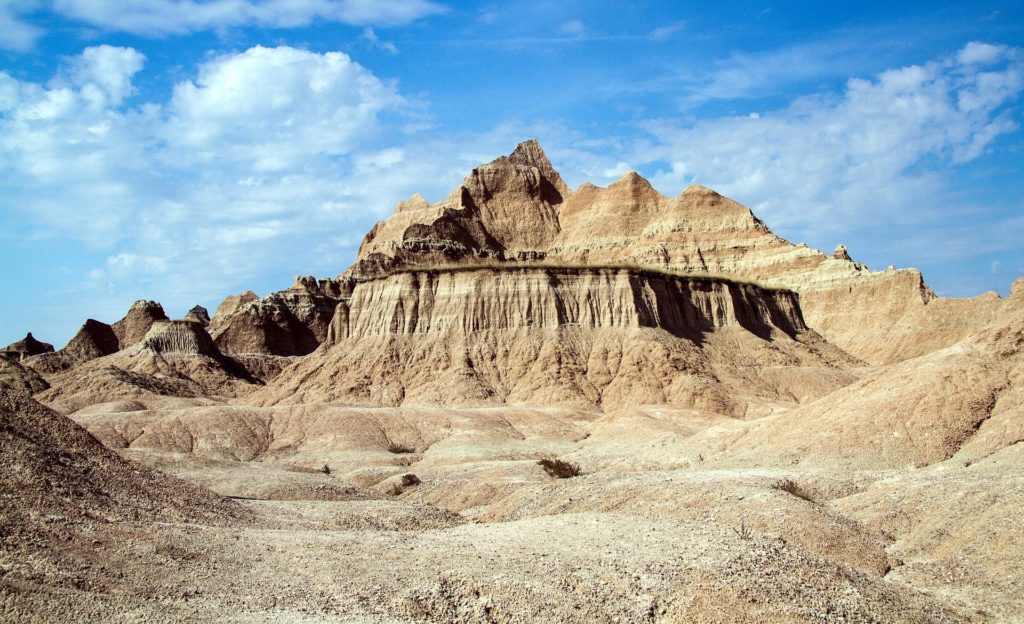
According to Lakota legend, the land was once known as “Mako Sica,” meaning “terrible land.” Badlands National Park is located in southwestern South Dakota, and it features numerous sharply eroded buttes, pinnacles, and spires intermingled with the largest United States federal-designated area of protected mixed grass prairie. It is the most desolate state one can be in, because no sign of civilization can be seen for miles.
This land has been severely scoured by wind and water, which has given it a distinct, beautiful look. This region of the world is made up of large, bizarre rock formations such as peculiar pinnacles, vast buttes, and deep gorges. The erosion of the Badlands reveals a variety of sedimentary layers, with purple shale, tan gravel, red iron oxides, and white, respectively (volcanic ash).
24. Everglades National Park
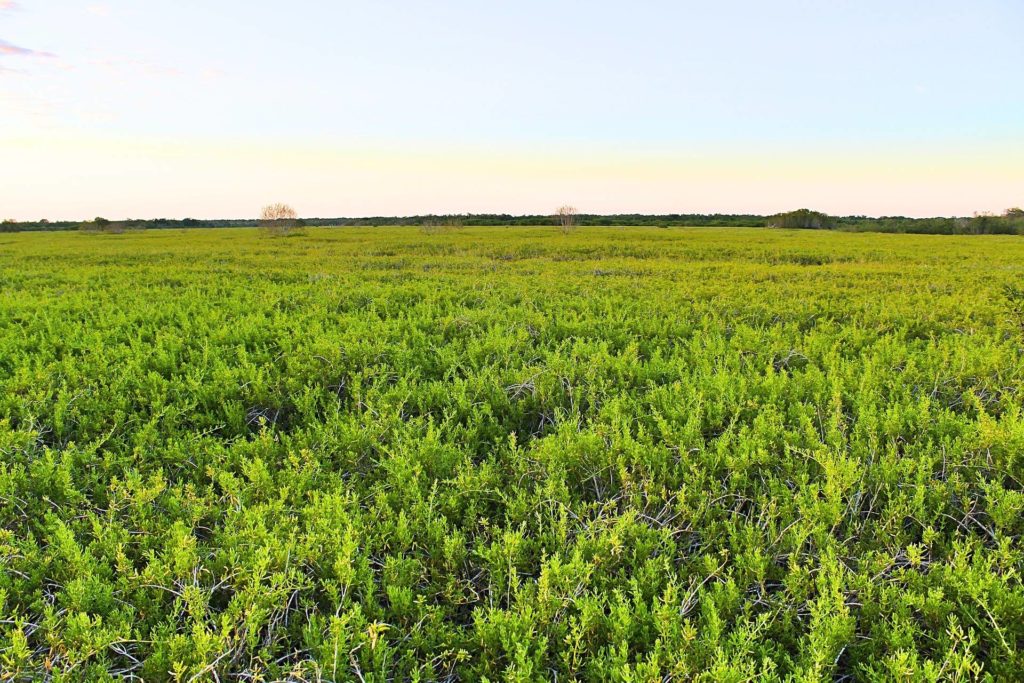
The one-hour drive from Miami gets you to the middle of the Everglades, a completely different world. With one of the world’s most diverse ecosystems, the park encompasses 1.5 million acres of tropical and subtropical habitat. The Everglades became a National Park in 1934 because of this reason. Following the designation of these three sites, the park has since been classified as an International Biosphere Reserve, an Important Wetland for International Trade, and a World Heritage Site.
Every year over one million people come from all over the world to the Everglades to enjoy its natural beauty. Three primary entry points include the Gulf Coast Visitor Center, which is located south of Everglades City and Naples, as well as the Shark Valley area accessible via US 41 (known as the Tamiami Trail).
25. Saguaro National Park

People who want to see giant saguaros in their natural habitat will enjoy this tour. Saguaro National Park not only protects and preserves a giant saguaro cactus forest that extends across the valley floor near Tucson, but also the animals and plants that depend on it. The saguaro cactus, only found in the Sonoran Desert, can grow to heights of more than 50 feet and live for 200 years. Given that they’ve been called the rulers of the Sonoran Desert, it’s no wonder.
Saguaro National Monument was first designated in 1933, and in 1994, the area was given national park status. Tohono O’odham Nation people continue to play a role in the park’s culture. Each year in the early summer, they return to the park to pick saguaro fruit.
Additionally, Saguaro National Park contains extensive expanses of desert as well as forested mountain regions that exceed 8,000 feet above sea level. Here, a wide range of flora and fauna coexist in varied landscape environments, such as prairie dog towns, quail villages, and desert tortoise habitat.
26. Canyonlands National Park
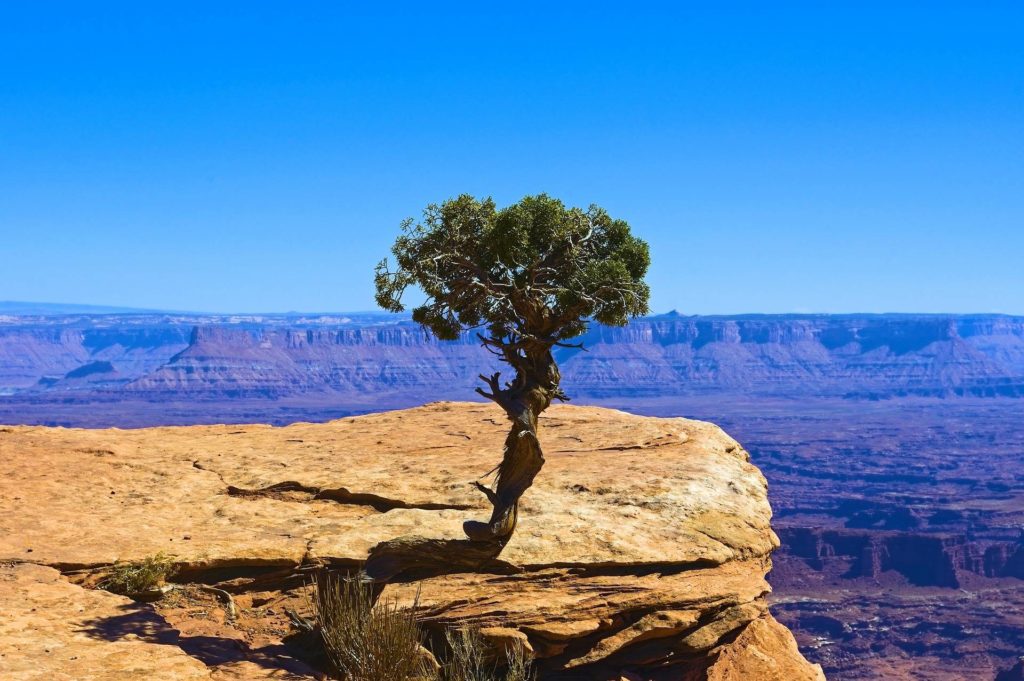
Canyonlands National Park is carved by the Colorado River, offering hikers, stargazers, campers, and technical rock climbers adventures. The canyon park was established in 1964, with 527 square miles of the river’s colorful landscape having eroded into countless canyons, mesas, arches, and buttes. Park Districts: Island in the Sky, the Needles, the Maze, and the Colorado and Green Rivers. Although the landscapes here are similar, each area offers different possibilities for exploration.
27. Crater Lake National Park
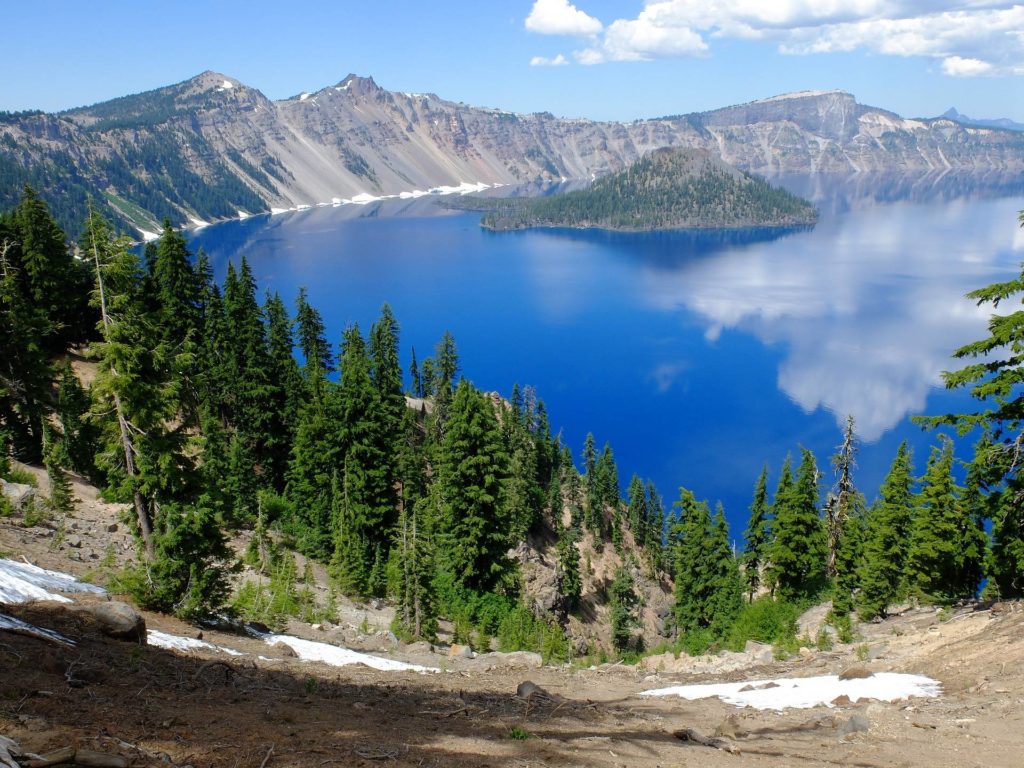
Crater Lake is famous for its beautiful blue water, located in a rugged section of the Cascade Range. The 20-mile-long basin is encircled by cliffs that heighten its beauty.
Covered by meadows and a mix of forests, the lake is nestled in a wilderness area within a four-hour drive from Portland, Oregon. The Ring Road offers amazing views of the 33-mile highway, as well as sailing to the 763-foot Wizard Island.
28. Theodore Roosevelt National Park
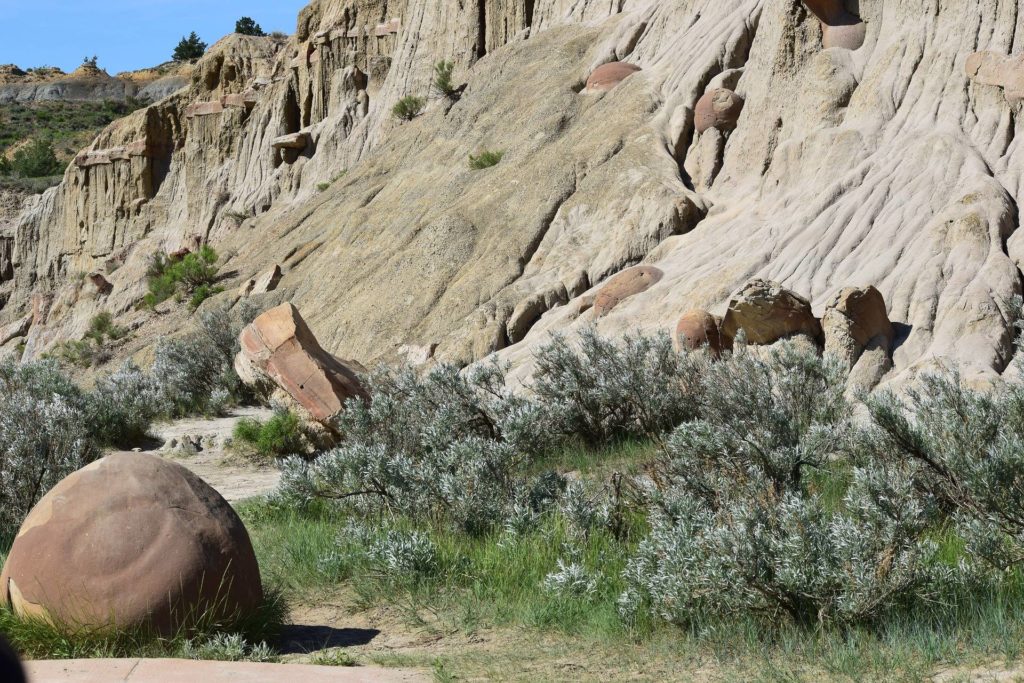
Visitors to the Theodore Roosevelt National Park today still appreciate the park’s influence on America’s “Conservation President” When Roosevelt ranched and hunted in the North Dakota Badlands, the park resembles its original uncrowded state.
Today’s visit is quick and easy, but every bit as meaningful. Accommodations and entertainment in the Old West town of Medora and nearby Dickinson are available for visitors who plan to head to the South Unit. Visitors to the more rugged Watford City area will discover many offerings similar to those in Watford City. The scenic drives and hiking trails of both units transport visitors in a close proximity to animals and inspiring views.
If you’re feeling relaxed and in the mood for some relaxation, go for a stroll under a brilliant sunny sky or under the light of countless stars. When it comes to enjoying the great outdoors, it’s possible to reconnect with friends and family while preserving the environment.
29. Petrified Forest National Park
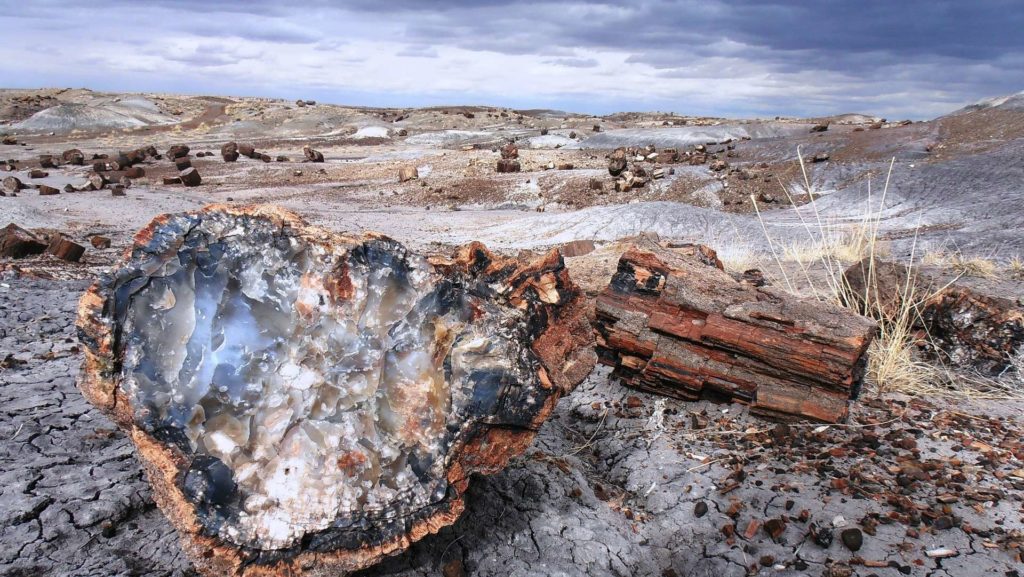
A fun fact about Petrified Forest National Park, which is located near the town of Holbrook, is that the forest is formed of more than 13,000 years of human history, plus the park offers a hiking trail, camping, and horseback riding.
Visiting Petrified Forest National Park allows you to explore one of the world’s largest and most vibrant arrays of petrified wood, historic structures, and archaeological sites. Fossils discovered in the Painted Desert of Arizona, dating back to 200 million years ago, reveal the story of the ancient Earth and its residents.
Before the period 200 million years ago when abundant forests and vegetation covered much of this area, trees and vegetation thrived in this area of Northeastern Arizona. However, the forest was totally destroyed by volcanic lava, which created sediment made up of volcanic ash and water. Millions of years later, the logs were liberated by erosion, and they later revealed the petrified wood, which is mostly made of quartz.
30. Wind Cave National Park
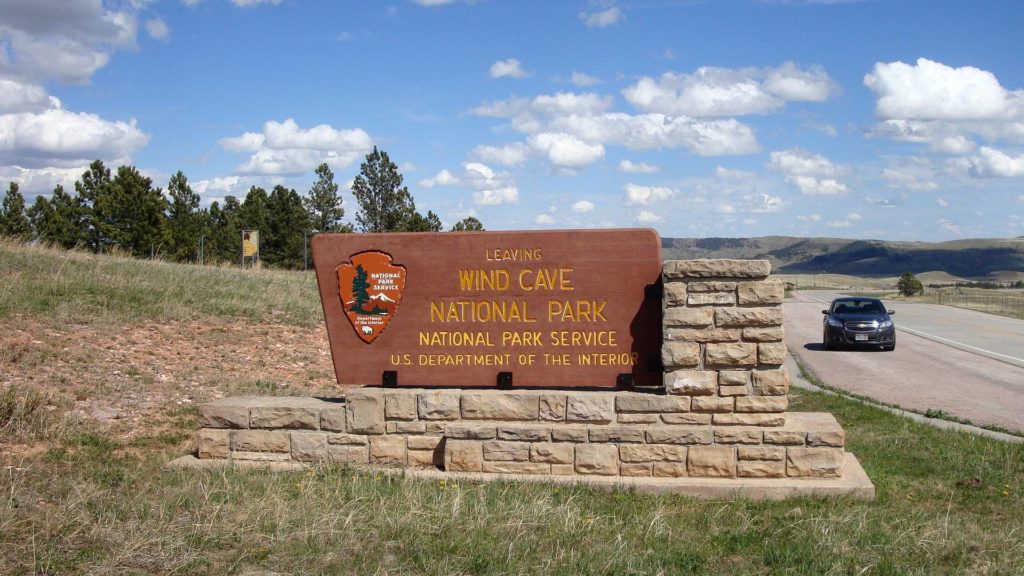
The Wind Cave National Park is located about 56 kilometers (35 miles) southwest of Rapid City, South Dakota. It was established in 1903 to save a large tract of prairie grassland in the Black Hills and several limestone caverns in the area. A total of 44 square miles (114 square km) of park ground contains approximately 80 miles (130 km) of explored passageways below the surface.
One of the largest cave systems in the world is the caverns. The name of the cave originated from the cave’s unique, reversible wind, which occurs when outside air pressure causes the wind to blow in or out. In addition, the cave contains striking boxwork formations created by calcite deposits in thin honeycomb patterns. While the cave’s entrance is artificial, only a small hole in the rocks serves as a natural one. Cave tours for visitors of all kinds are available.
The game sanctuary, located within the boundaries of Wind Cave National Park and Custer State Park, is host to herds of antelope, deer, and bison; prairie dogs and coyotes; and a great number of birds. Deciduous and coniferous trees, in particular ponderosa pine, are also vegetation, while the various species of wildflowers are vegetation as well.
31. Sequoia & Kings Canyon National Park
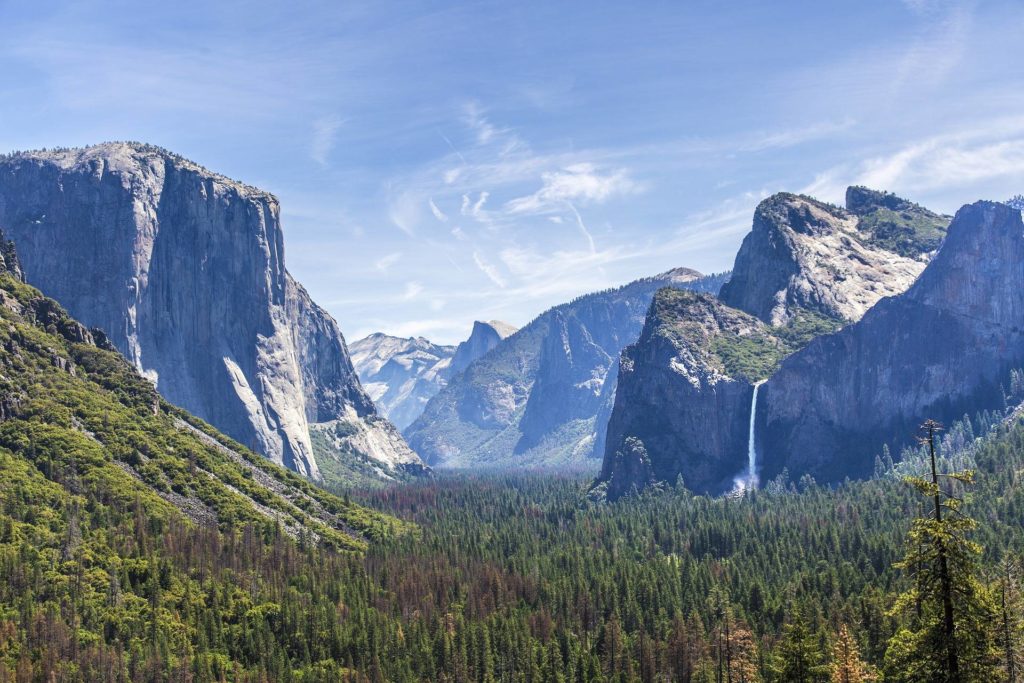
Sequoia & Kings Canyon National Parks include some of the most majestic sights, not only in California but in anywhere in the world. Giant trees, deep canyons and towering mountains. These adjoining Parks, which are 13,100 feet above sea level, are the largest tree in the planet and Mount Whitney, the highest point in the Lower 48, are 14,494 foot above sea level.
Drive on a narrow road from Grant Grove, in the northwest corner of the park, to the commanding point of view in Sierra Nevada (7520 feet). A short paved path leads to this view of the Kings Canyón and Hume Lake, which is named after her. For a longer walk on a 2,5-mile path from the point to Ridge Fire Lookout Still Operational Park.
32. Denali National Park
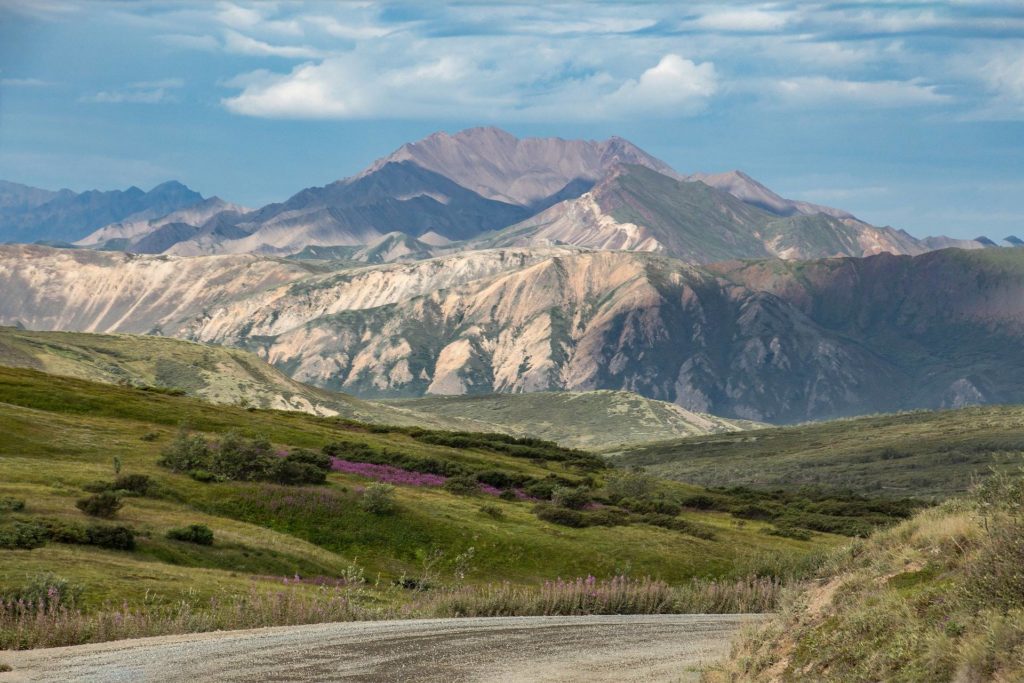
Visitors to the most famous Alaskan national park, Denali, often receive sights that stay with them throughout their lives. The colorful cliffs of the Polychrome Pass can be seen to float off a golden eagle or the herd of Dall’s sheep on the green shoulder of Primrose Ridge can be seen. On Sable Pass a massive bear could wander across the tundra. Perhaps a caribou pauses on a ridge silhouette, silhouetted by the warm daylight, or a loon rings across Wonder Lake.
The clouds may reveal the great massif of Denali itself at a height of 20,320 feet, the roof of North America. The clouds are often notorious.
The vast wilderness, more largely untouched by human Hands and except for the one park road and some dispersed services, is larger than the New Jersey State, Denali National Park and Preserve. It is known for its legendary fauna and great adventures, from camping in backcountry to mountaineering. Wild adventures are often waiting for those who stick to a bus tour of the park’s road and its scenic views.
33. Mammoth Cave National Park
Mammoth Cave National Park was one of Kentucky’s most popular attractions, and it conserved the grotto system including Mammoth Cave, the picturesque green and Nolin river valleys and part of south central hilly country Kentucky. This is the longest recorded winery system in the world and has been explored and mapped over 400 miles. The entrance to the Park is free of charge. Campsite and cave tours are subject to a fee. Activities include horse-riding, hiking, cycling, picnicking, camping, camping, canoeing, fishing and the most enjoyable of Kentucky’s activities. Campsites and hotel facilities are part of Mammoth Cave National Park’s overnight rooms.
The cave is a historical place that started from the natives of North America and with the young United States settled in Western Europe, it became an increasingly popular tourist destination. But the fact that many of the most important guides and explorers of the 19th and early 20th centuries of Mammoth Cave were African American, many people don’t know. Today, Mammoth Cave can be explored on a number of guided tours.
34. Mesa Verde National Park

Mesa Verde National Park is the biggest archeological reserve in the United States, located in Montezuma County, Colorado.
It is said that the remains of its villages and homes are among the world’s best-preserved cliff dwellings. The ancestral Puebloans who lived in Mesa Verde between 600 and 1300 once lived at 81.4 square miles from the National Park. In the park there were more than 600 rocky residences and 4 000 archeological sites. A visit to Mesa Verde National Park will give an amazing view of the ancient life of man.
The name of the national park is Mesa Verde, a Spanish for a “green table,” because of the lands of former people, mainly maize and meat. Visitors will also experience these beautiful tables and the fascinating ruins of the people who have been living there many years ago. The Balcony House is a remarkable structure with 45 rooms and 2 kivas and a ruin of Pueblo. Through a 32 foot ladder and a 12 foot tunnel, visitors enter. Other old interest ruins include the ruins, villages, reservoirs and towers of several stories.
35. Redwood National Park
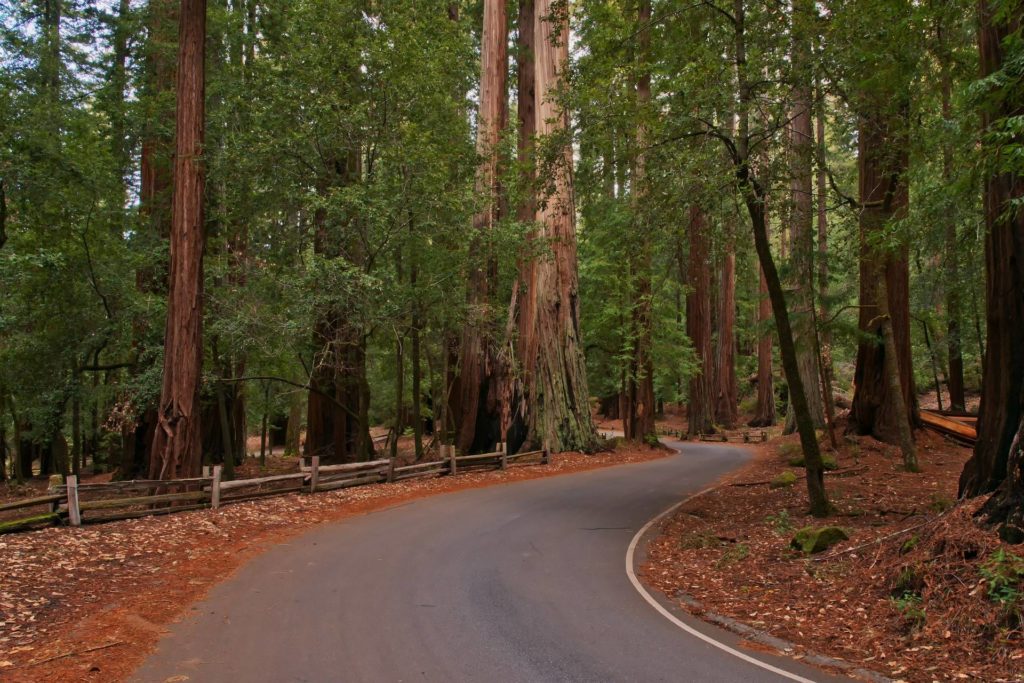
Redwood National and State Parks will leave you speechless. A massive area that encompasses several national and state heritage sites protects about half of the world’s redwood forests, which are on the World Heritage List. In this national forest, some trees can reach over 370 feet into the air, making them five stories taller than the Statue of Liberty. To make the most of your trip, leave your car behind and go on a hiking or mountain biking expedition to one of the many trailheads in the park, where you can also go see Fern Canyon, featured in the second Jurassic Park film.
36. Lassen Volcanic National Park
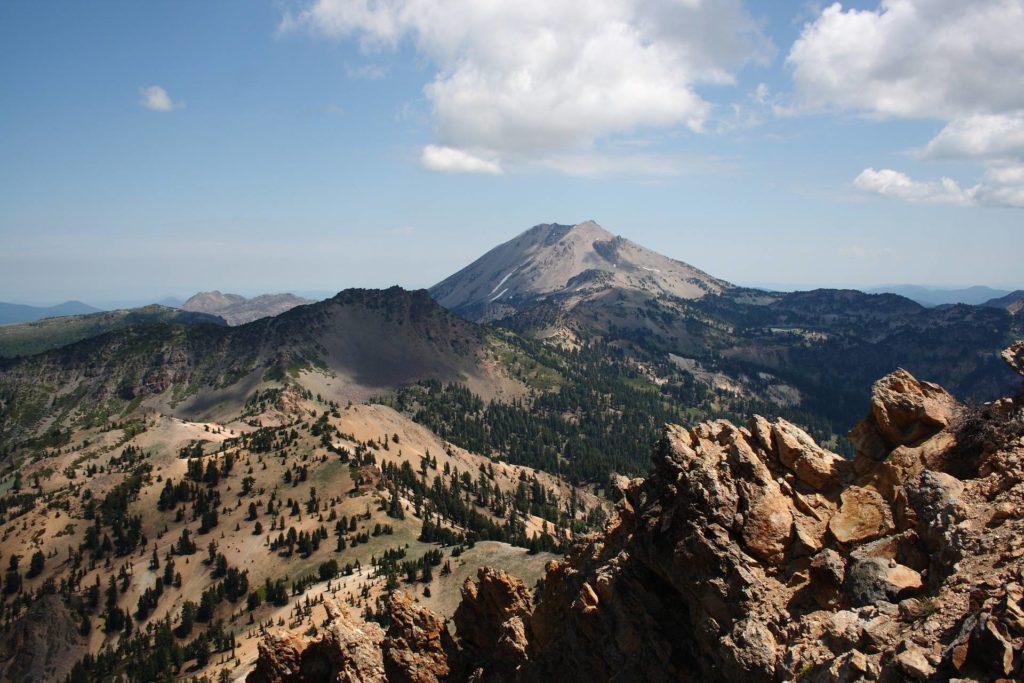
Ferocious hydrothermal features like steaming sulphur vents, splattering mud pots, and boiling springs prove that the Earth is alive. The volcano Lassen Peak of Lassen Volcanic National Park has erupted several times, and the outbursts have continued for three years. Once the trail is no longer being used, you will be able to follow the lines of geology through tranquil landscapes of dense forests and sparkling lakes. Follow the fires to their source at Sulphur Works or Bumpass Hell, and then try your hand at rock climbing or kayaking.
37. Glacier Bay National Park
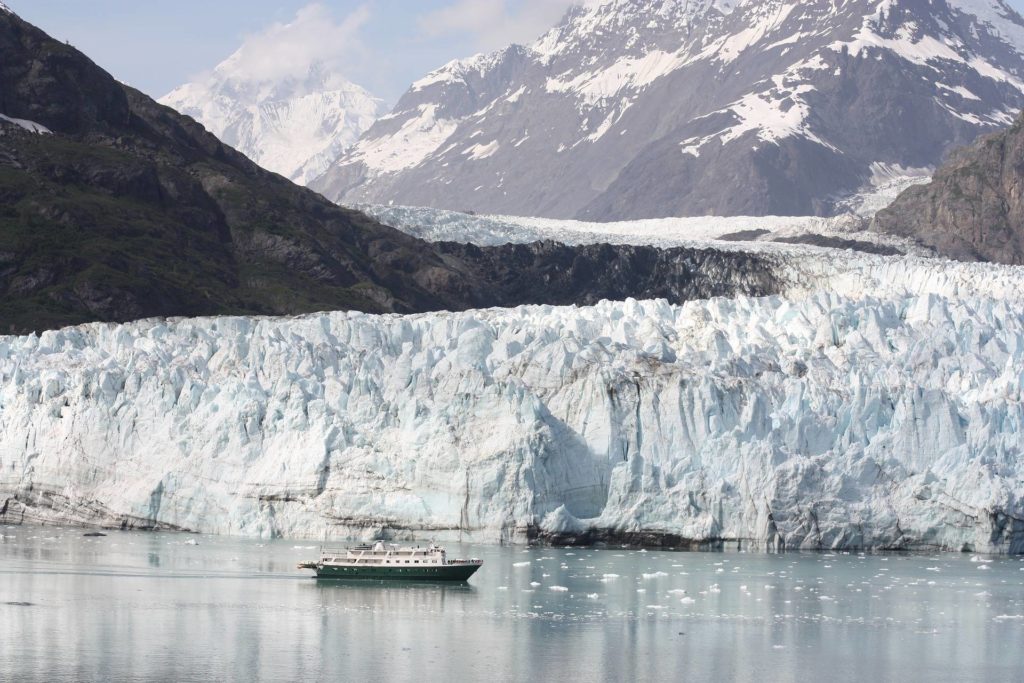
A portion of the world’s most impressive tidewater glaciers can be found in Glacier Bay National Park and Preserve. The bay has experienced at least four major glaciations, with each event having been marked by at least one major advance and one major retreat. The area serves as an outdoor research laboratory, allowing scientists to observe and experiment with changing climate. Rising mountains are about three vertical miles above the ocean’s tidewater. Mount Fairweather is the highest peak in the southeastern section of Alaska. The vast diversity of plant communities ranges from lifeless terrain that has only recently emerged from the effects of a glacier to vibrant temperate rain forest. There is no better telling of the plant succession story than in Glacier Bay.
Besides 50 named glaciers, as well as two major arms—East Arm and West Arm—Glacier Bay has two others that have their own names. Almost all visitors to the Park arrive via cruise ship, and almost all of those vessels travel to the Margerie Glacier via the West Arm. The answer is because. This glacier moves approximately 12 to 14 feet per day, calves frequently, and advances 12 to 14 feet a day. You can learn about the area much more intimately and have an experience that’s close to that of a large ship if you choose a small ship cruise.
38. Biscayne National Park
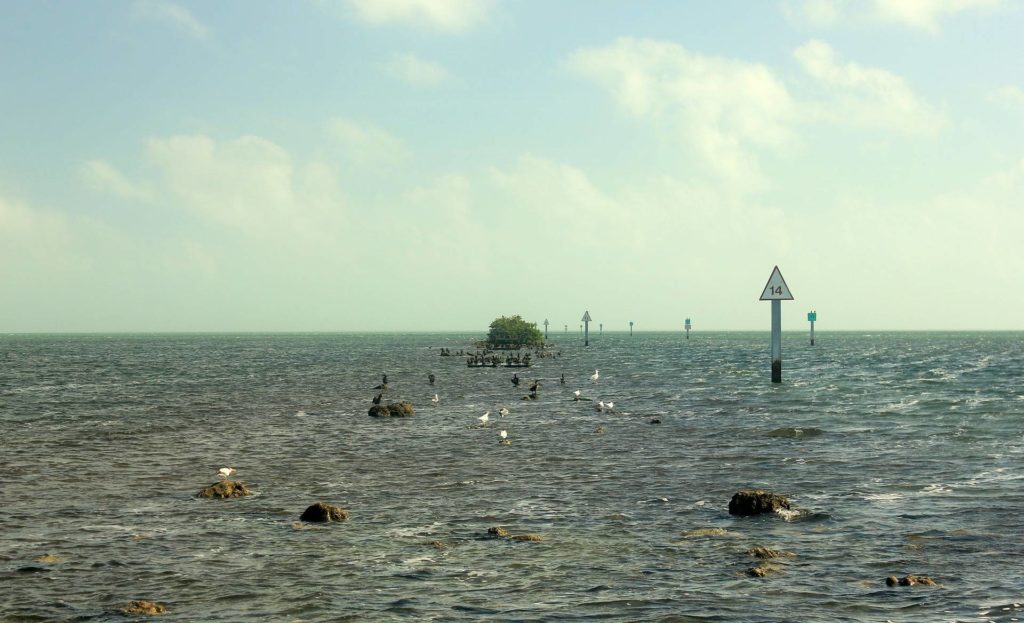
South Florida is renowned for its natural beauty, where diverse ecosystems are nowhere else to be found in the country. One of the area’s ecological highlights is the magnificent Biscayne National Park with its numerous aquatic wonders.
Biscayne National Park is the United States’ largest marine sanctuary, and 95% of it is located in Biscayne Bay and the Atlantic Ocean. Aquamarine waters, an extensive variety of wildlife, and fantastic aquatic adventures are all part of this location.
One of Biscayne National Park’s most prominent features is its rich biodiversity, including various ecosystems found on coastal mangrove hammocks, in Biscayne Bay’s shallow lagoon waters, in coral limestone keys, and on the world’s third-largest offshore reef. An estimated 2,000 species can be found here, many of which are at risk, including the Florida manatee, hawksbill sea turtle, and American crocodile. More than 110 bird species, including the roseate spoonbill, wood stork, and the critically endangered mangrove cuckoo, are present on the Biscayne Birding Trail. There are also 600 species of native fish that can be found in the area.
39. Carlsbad Caverns National Park

This incredible limestone cave in the Guadalupe Mountains of southeastern New Mexico, just north of the Texas border, was discovered by a curious teenager in 1898. Over 119 limestone caves are contained within the vast beauty of the Chihuahuan Desert in the national park. Approximately 410,000 people come to see the fossilized caverns or the thousands of Brazilian free-tailed bats each year to see the bats in Carlsbad Caverns National Park. There are a variety of hiking trails and a picnic area for visitors.
Visitors to the park should know that the weather can get very hot during the day, but they shouldn’t be fooled by the weather during the day. It is quite nice and cool in Carlsbad Cavern, so please bring a jacket if you plan to visit. During the summer months, temperatures may reach 90 to 100 degrees and fall to 60 to 70 degrees during the night. When fall comes, pleasant weather with highs in the 70s and lows in the 50s are observed during the day. On the other hand, in September, temperatures can drop all the way down to the 30s, and in November, they remain in the upper 30s. A winter in the park is generally pleasant, with temperatures ranging from highs in the mid-50s to lows that rarely dip below the low 30s. When temperatures warm to the 60s and 70s during the day, one of the best times to visit the park is in the spring.
40. Virgin Islands National Park
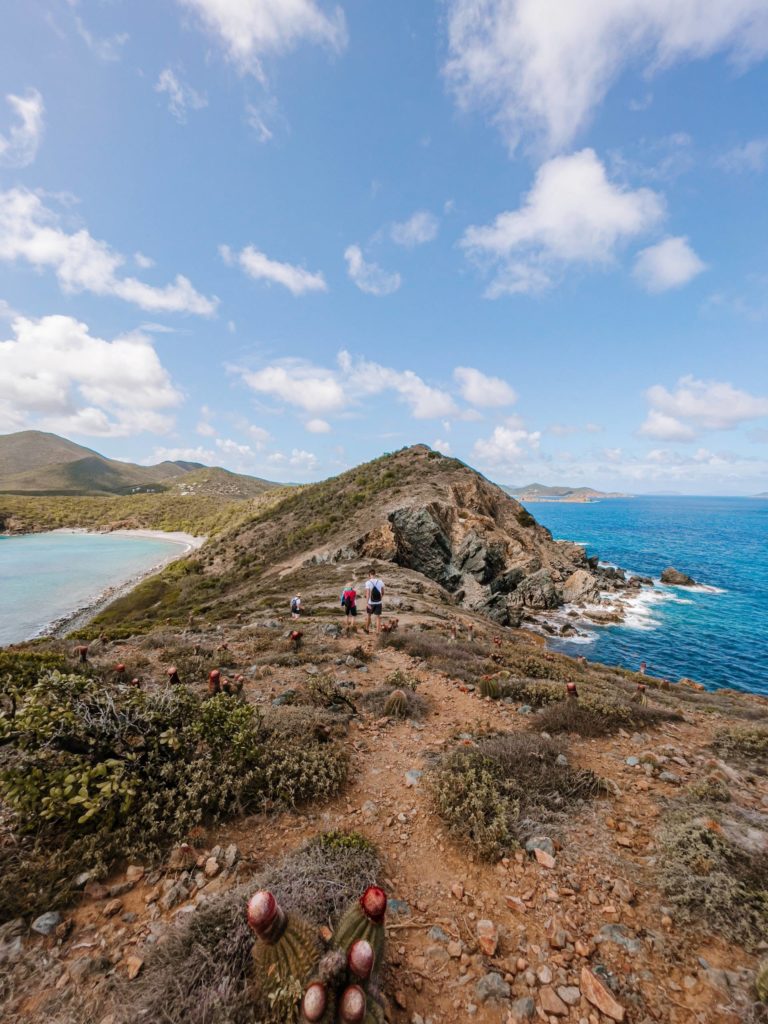
Within the forested St. John Virgin Islands National Park, which encompasses miles of lush greenery, historic plantation ruins, pristine beaches, and coral reefs teeming with marine life, are acres of clear water where many types of sea life can be seen. Trails wind their way through scenic lookout points, many of which lead to the seashore, providing wonderful views along the way. St. John is a wonderful place for people who like to bask in the sun, as its beaches are stunning.
Exploring the historical sites, beaches, and trails are all a breeze because the park is well developed. There are a number of things that travelers should see on their vacation, including Cinnamon Bay, Cinnamon Bay Plantation ruins, and Annaberg Plantation. In addition to exploring the above locations, there are dozens of other National Park Sites & Ruins where you can discover. There are several ways to enjoy the National Park; you can kayak, camp, fish, dive, hike, scuba dive, snorkel, swim, and observe birds!
41. Great Sand Dunes National Park
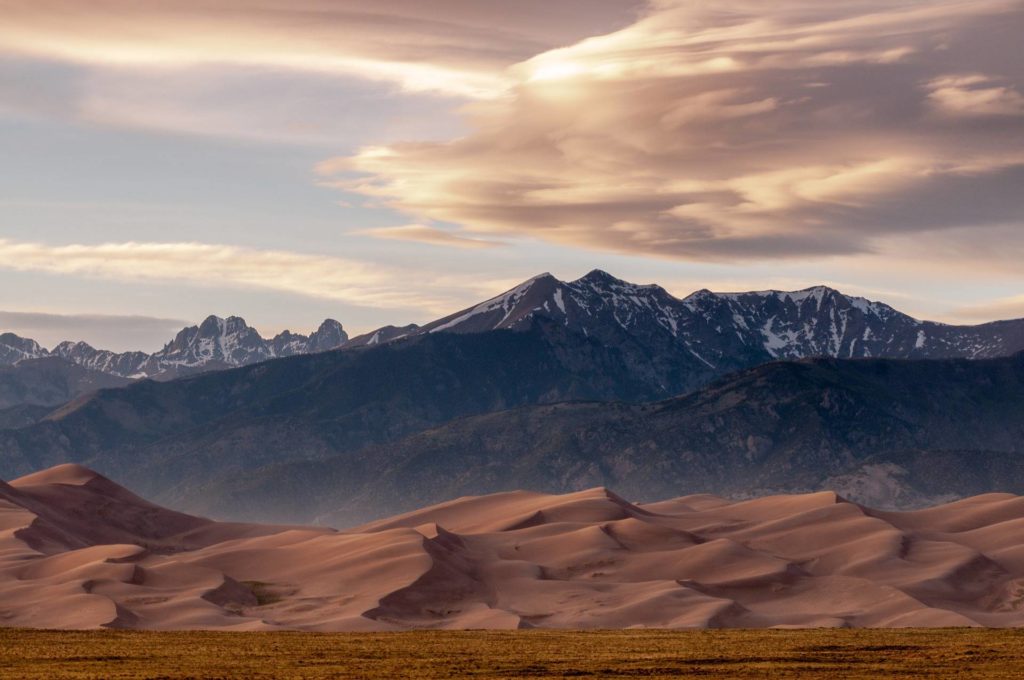
You will have the opportunity to engage in a creative adventure in the Sangre de Cristo mountains, with many rugged 14,000′ peaks. This park features landscapes that range from vast sand dunes to lush forests, from straight-grained cottonwood groves to snow-capped mountain peaks and permafrost. 13,604 feet above sea level is the highest elevation in the park. the visitor center and campground areas are situated about 8,200 feet (2,590 m) above sea level
According to recent scientific studies, the Great Sand Dunes in Colorado have been in existence for about 440,000 years, having formed following the decline of an ancient inland lake that once covered the San Luis Valley – which is now called “Lake Alamosa” after evidence of the lakebed was discovered in 2002. Colorado’s Great Sand Dunes, one of the most distinctive geographic features of the state, are formed by prevailing winds blowing across a low point in the Sangre de Cristo Mountains.
This combination of two mountain streams named the Medano and Sand Creeks transfers sand from the nearby sand dunes and carries it around the valley, where it is recycled on the valley floor. Likely as a result of wind and water constantly carrying away the sand, the Great Sand Dunes National Park, which is the tallest sand dune in North America, remains preserved as well.
42. Big Bend National Park
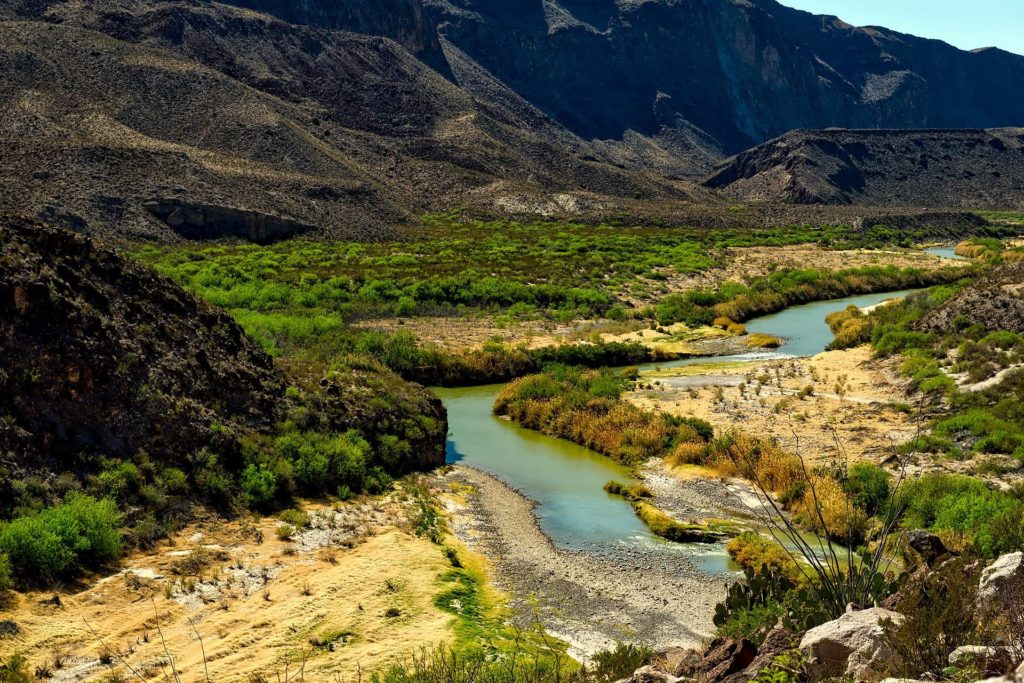
It is one of the most popular attractions in the entire region, specifically within the Big Bend National Park. Also, it’s a playground of nearly 1,000 square miles, and a classroom all in one. The park, which encompasses 800,000 acres, is composed of three primary ecosystems: rivers, deserts, and mountains. It comprises the largest area of the Chihuahuan Desert in the United States which is protected in Big Bend National Park.
The Chihuahuan Desert’s largest protected area is found in Big Bend National Park. This is the only national park in the United States that encompasses a full mountain range, which is the Chisos Mountains.
43. Channel Islands National Park

A pristine, California destination, as well as abundant natural beauty, is found in this chain of five islands—Santa Cruz, Anacapa, Santa Rosa, Santa Barbara, and San Miguel. Exploring the Channel Islands National Park can be done in many ways, including by kayak, yacht, or just by foot.
In order to reach the national park, you will need to travel by boat or airplane for around half an hour. On most trips, Island Packers, located in Ventura Harbor, picks up passengers from there to head to the national park’s visitors center, followed by a tour of the park’s two closest islands, Santa Cruz and Anacapa. Santa Barbara Sailing yacht helmed by a U.S. Coast Guard captain takes you to the islands. Look out for whales, dolphins, and flying fish while traveling between cities.
44. Kenai Fjords National Park
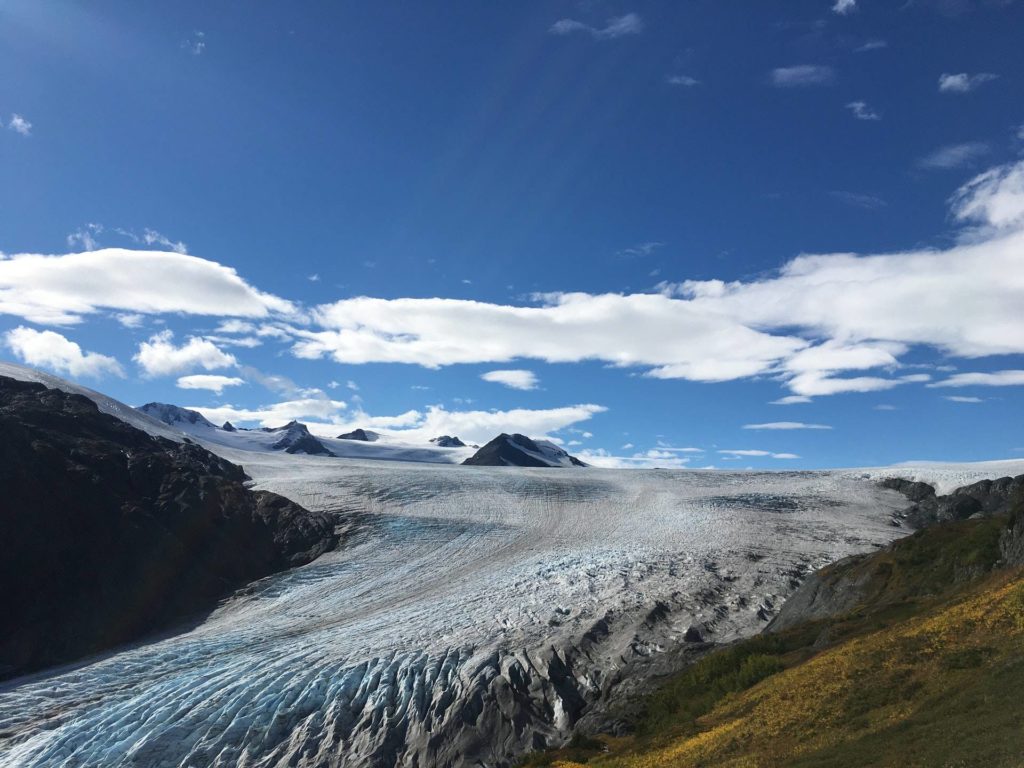
Simply put, Kenai Fjords is Alaska’s smallest national park. While the land sprawls along the long fjords and hundreds of quiet bays and coves, the sea reaches inland with talon-like peninsulas and rocky headlands.
One of the most stunning sights at Glacier is the Harding Icefield, which covers approximately 714 square miles of ice up to a mile thick. The lake feeds three dozen glaciers, six of which go into the ocean. While much of Alaska was covered by a massive ice sheet during the Pleistocene, remnants of this sheet can still be found in the Harding Icefield.
The glaciers of the past carved out the fjords of Kenai, creating ecosystems home to numerous sea creatures. Clown-faced puffins are common around the rocky coastline where about 20 species of seabirds nest. On the tallest cliffs of the towering cliffs, bald eagles soar and peregrine falcons search for prey outside the islands. Over the course of thousands of years, hundreds of thousands of seabirds have come to this island each year.
45. Voyageurs National Park
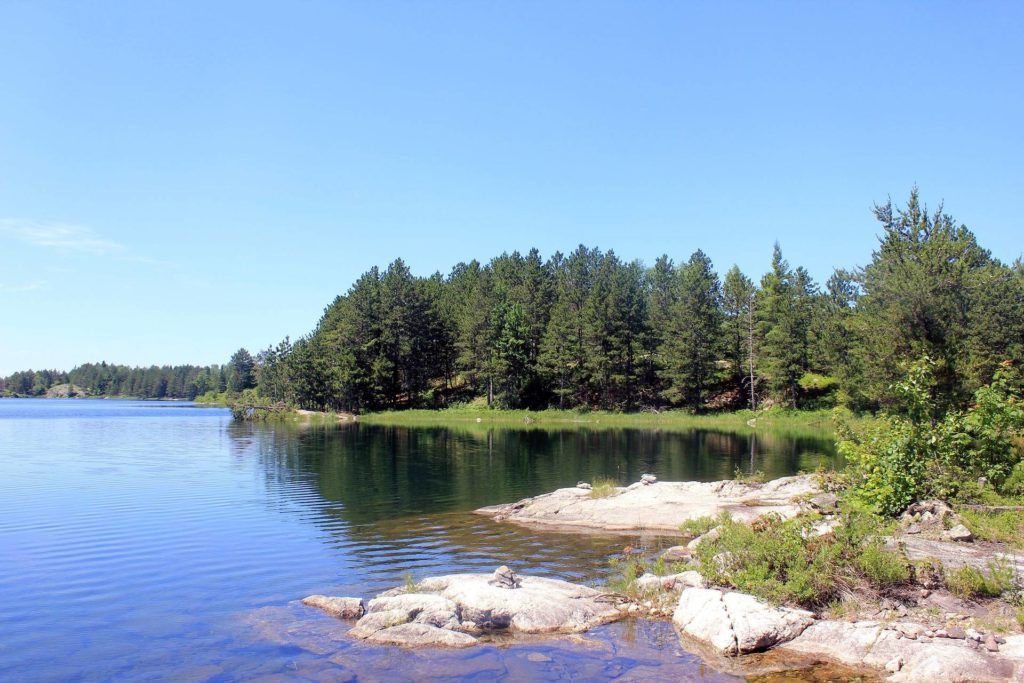
In French, voyageur refers to a traveler, and Voyageurs National Park calls to those who enjoy traveling in search of adventure. The scenery here is quite beautiful: Most of the year, the park’s interior is only accessible by boat because of the quantity of water it contains (or in winter, by snowmobile). Take a boat tour with a park ranger, rent a houseboat, or hike on more than 27 miles of scenic trails.
46. Black Canyon of the Gunnison National Park
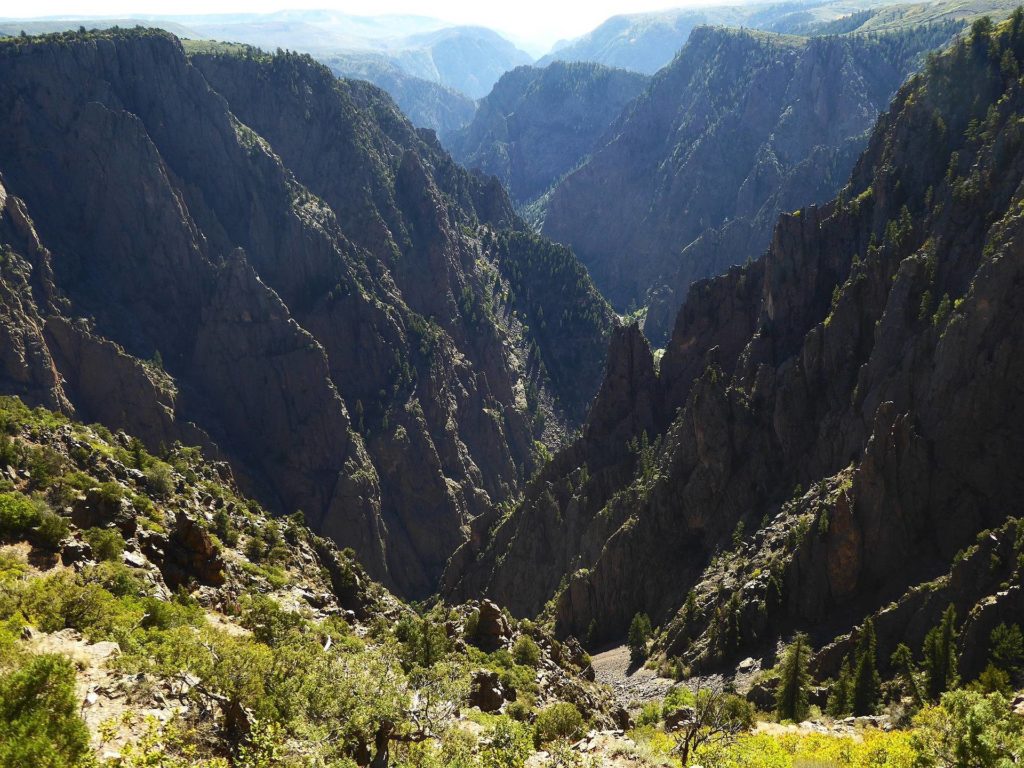
Visitors are welcomed to experience the grandeur of Voyageurs National Park, a region of lakes and wilderness located in northern Minnesota, USA. The park is located between International Falls, Minnesota, and Lake Vermilion, Minnesota, on the Canadian border. Established in 1975 and authorized in 1971, it was named for the mostly French-Canadian fur traders known as voyageurs (French: “travelers”). Canoes made of giant birch bark were used by the voyageurs, who were hired by the beaver-trapping business in the Canadian Northwest, to carry beaver pelts and trade goods between Montreal and the Canadian Northwest. 341 square miles of land is available for the use of the park (883 square km).
Numerous interconnected lakes, the largest of which are Rainy, Namakan, and Kabetogama, are part of the park’s ecosystem. The Kabetogama Peninsula is the main point of interest within the park and is surrounded by three large lakes. Found throughout the park are deciduous and coniferous tree species such as pines, firs, spruces, and birches. While there are various species of wildlife present, the most common species include deer, moose, beavers, wolves, coyotes, and various varieties of native waterfowl and other birds. In the summer, access to the park is primarily by boat, while in the winter, snowmobile and ski traffic allow vehicles to travel along the northern edge of the peninsula, which is seven miles (11 km) in length.
47. Pinnacles National Park
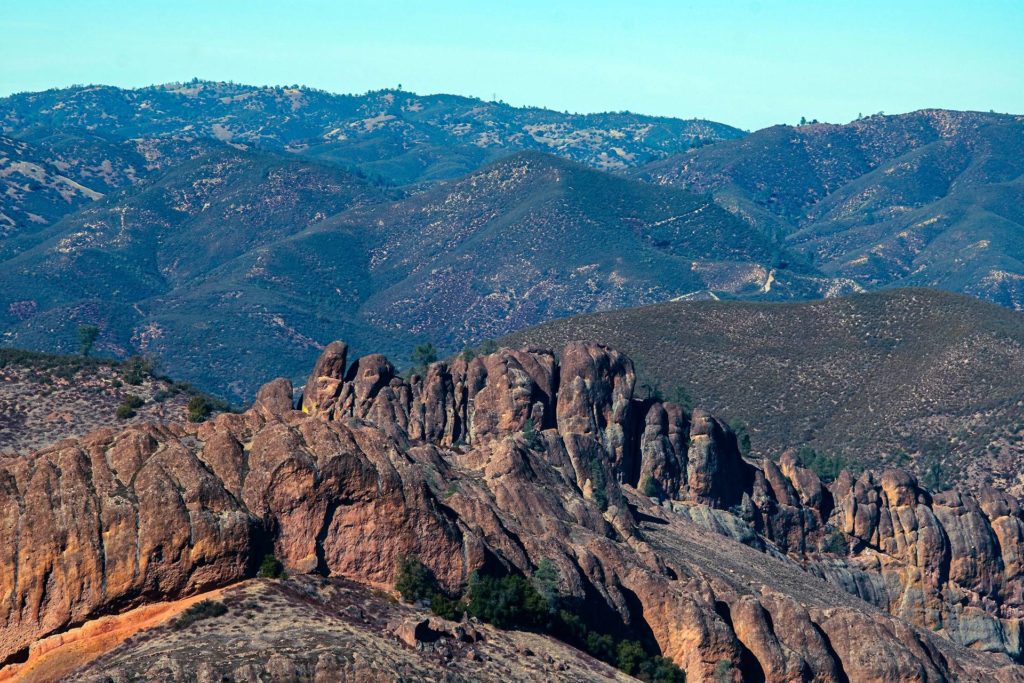
The beautiful and extremely diverse Pinnacles National Park is the result of an ancient volcanic eruption. Wandering through the chaparral, oak woodland, and canyon landscape, animals like mule deer, pronghorn, and coyotes reside.
The spectacular, long-abandoned ruins of an ancient volcano are located in the Gabilan Mountains, east of the Salinas Valley in central California. millions of years of erosion, faulting, and tectonic plate movement have shaped huge monoliths, spires, sheer-walled canyons, and talus passages. The park contains 26,000 acres of diverse wildlands within its boundaries. People frequently visit the park to see and enjoy the abundance of spring wildflowers. Welcoming a rich diversity of wildlife throughout the year is possible.
In Pinnacles National Park, the many rock formations divide the park into East and West Districts, and these districts are linked by hiking trails. An extensive network of trails allows hikers to enjoy amazing landscapes, remarkable vistas, and wildlife habitats. Also, the Pinnacles’ rock formations are visited by those who like to test their skills with their climbing gear.
48. Guadalupe National Park
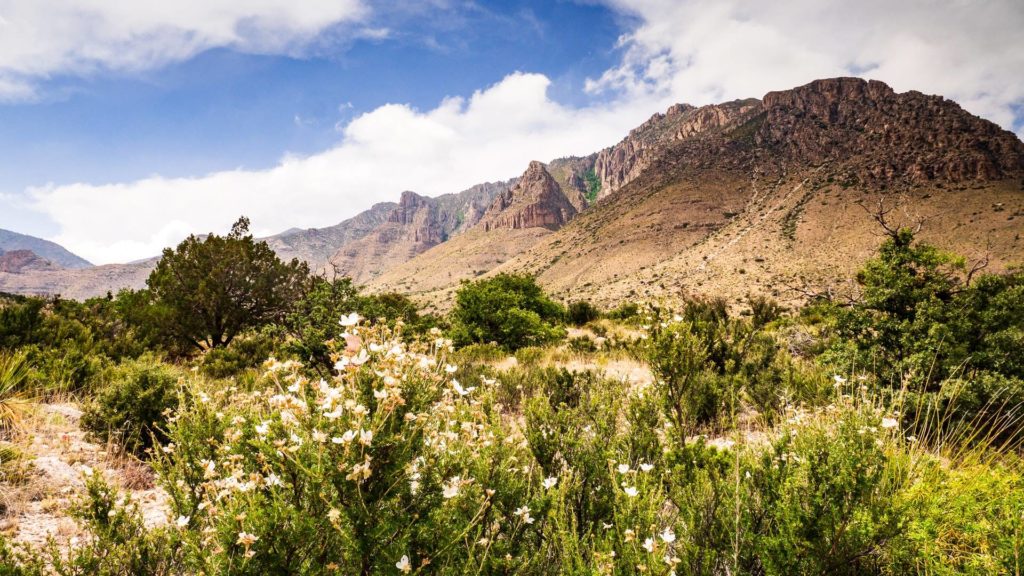
For 10,000 years, these mountains have seen a lot of activity. In prehistoric times, numerous caves offered shelter to early hunter-gatherers, who later on discovered that the Mescalero Apaches had made excellent hunting opportunities available to them on the land. There are some tangible aspects of a place that mark the passage of time, such as agave roasting pits, which are still here in the region. A small museum dedicated to the history of what happened at Frijole Ranch in this incredible mountain range tells of coming and going, conflict and conquest, and the history leading up to the establishment of a national park on this wonderful range.
If you’re interested in hiking, don’t miss Guadalupe Mountains National Park, with over 80 miles of trails that wind through woodland canyons to lush springs. Beginner hikers can use steep switchbacks that zigzag up the mountains to access the more rugged areas of the park, where once-in-a-lifetime photo opportunities await.
49. Great Basin National Park
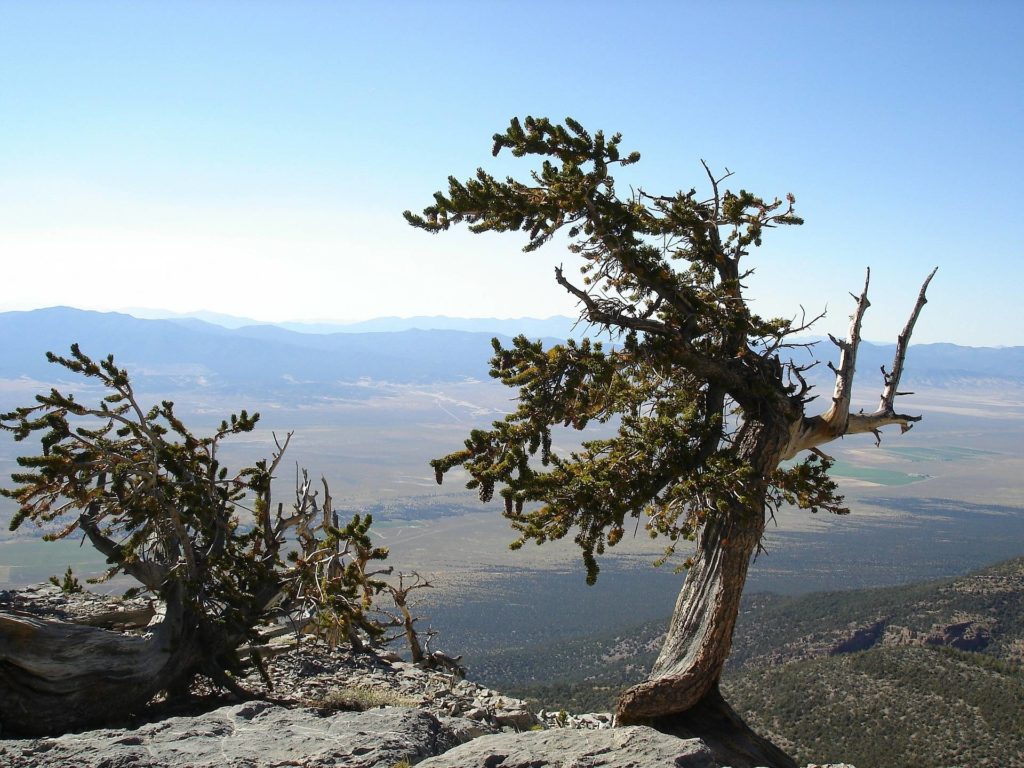
This Great Basin region gets its name from the fact that it is filled with extensive stretches of sagebrush-covered valleys and thin mountain ranges, the latter of which are named because they have almost no drainage. With few exceptions, rivers and streams that flow into the ocean remain blocked and do not have an outlet. This causes them to accumulate water in shallow saline lakes, marshlands, and mudflats. There are multiple basins situated to the north and south of mountain ranges that are paralleled to the east and west in a seemingly endless geographic pattern of mountains and basins. Broad basins stretch between craggy mountain ranges — from the Sierra Nevada in California to the Wasatch in Utah.
After a long drive, the landscape might appear flat and uniform, with pale green shrubs covering the land. Looks can be deceiving. Surprisingly, many forms of life remain elusive to the naked eye. The mountain range is a kind of archipelago: it is a collection of mountainous islands of different elevations of cooler air and more abundant water. They can be found in abundance in the upper region, where they would be unable to survive in the lower region.
50. Congaree National Park
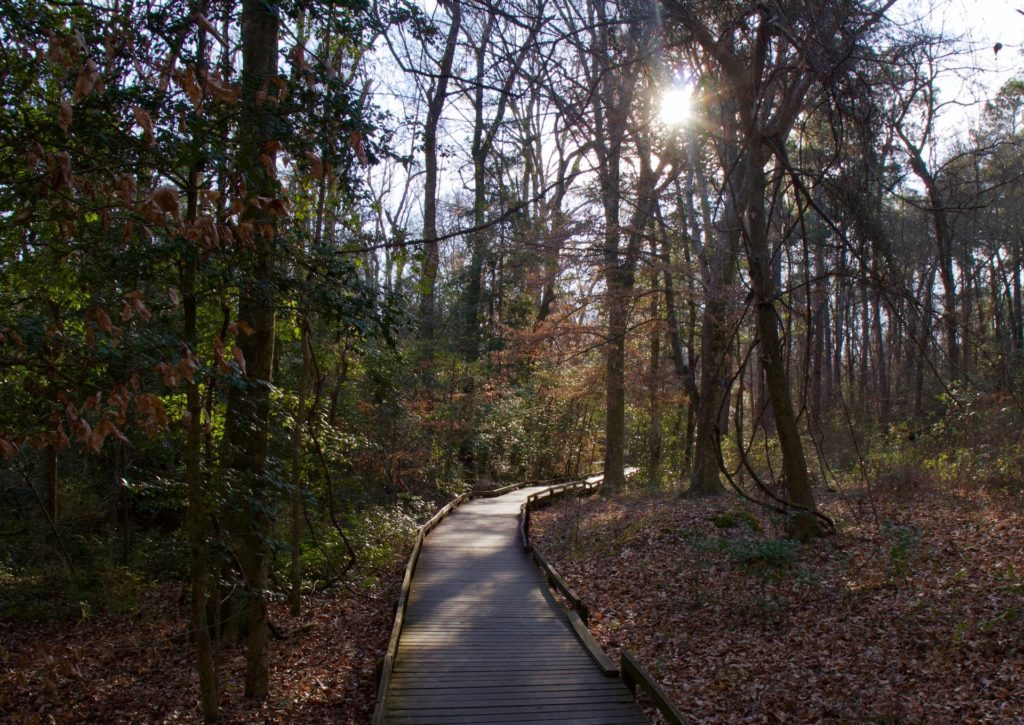
One of the world’s tallest and most spectacular forests can be found in the Congaree River floodplain, due to the presence of huge hardwoods and towering pines. A refuge for plants and animals, a research location for scientists, and a restful outdoor setting for hiking and relaxing are all provided by the park.
This beauty attracts many visitors, but Congaree’s landscape is deeply rooted in the area’s rich cultural heritage. Indigenous Native Americans, Revolutionary War patriots, and runaway slaves have all called Congaree home.
In the thousands of years prior, Congaree was inhabited by Native Americans, who found life in the abundance of natural resources in the floodplain. The floodplain served as a refuge for enslaved African Americans and as a place to find freedom. They harvested Cedar Creek, hunted in its vicinity, and baptized children in its waters after slavery had ended.
But fishing is still great, as well as hiking, camping, and boating at Congaree National Park.
51. Wrangell St. Elias National Park
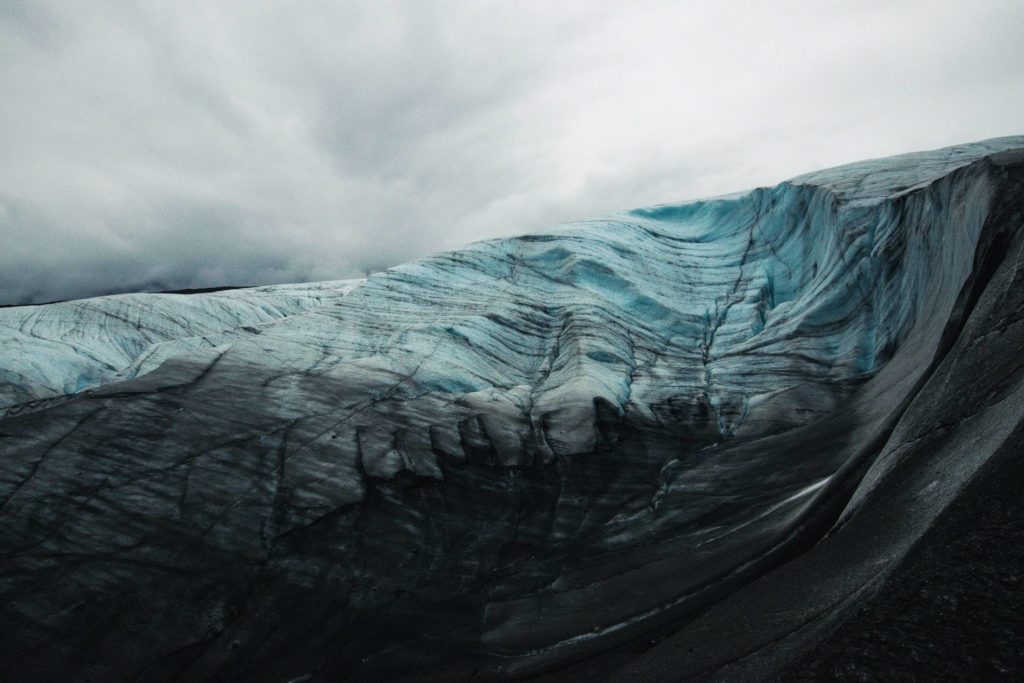
A vast natural area situated on the border between Alaska and Yukon in the U.S. in Wrangell–Saint Elias National Park and Preserve. The designated World Heritage Site, as well as the established national park and preserve, were both declared by U.S. President Jimmy Carter in 1978. The national park system has a total area of approximately 13,005 square miles (33,683 square km), which is almost exactly 20,587 square miles (53,320 square km). The park is focused on the convergence of the Chugach, Wrangell, and St. Elias mountain ranges, which include the largest collection of glaciers and the greatest number of peaks that exceed 16,000 feet (4,880 meters). Second, only to Mount Everest in the United States, Mount St. Elias reaches 18,008 feet (5,489 meters).
52. Dry Tortugas National Park

Come discover one of the nation’s most preserved 19th-century forts, enjoy a snorkel trip to picture-perfect coral reefs, and spot rare marine life in a special water park where over 99% of the park is open water with seven islands.
Although only accessible by boat or seaplane, the Dry Tortugas National Park is only a little over 70 miles west of Key West. The island, which is referred to as the home of Fort Jefferson, has more than 16 million bricks fortifying it and serves as a haven for creatures living above and below the surface of the water. It’s an ideal getaway for fans of history and picturesque blue waters, so it’s great for bird watching, beach camping, and snorkeling.
53. Katmai National Park
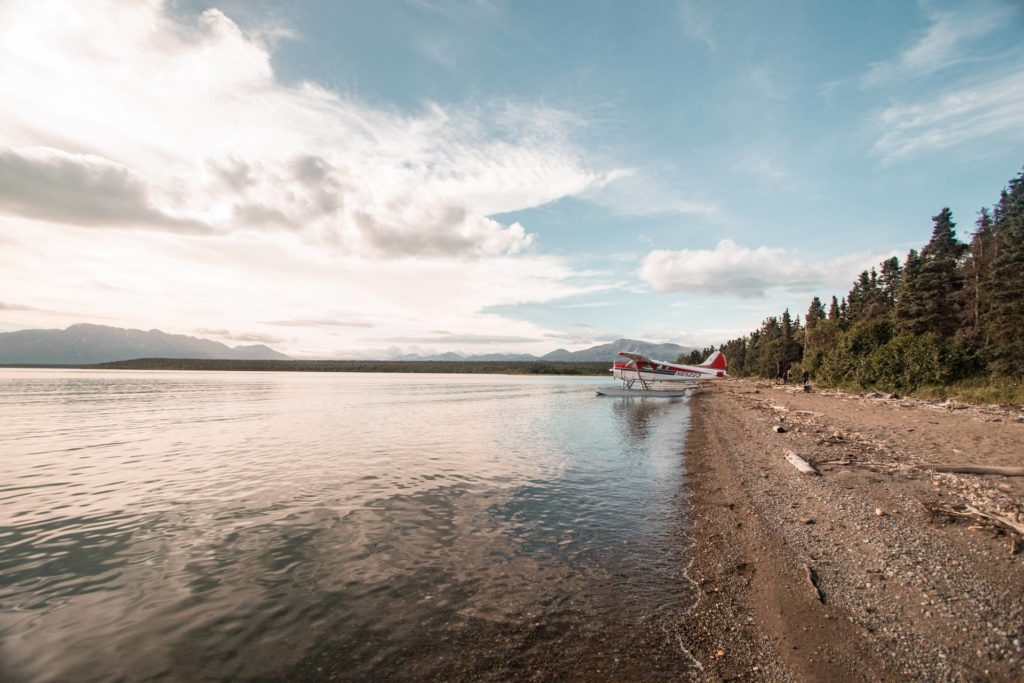
The stunning and unusual volcanoes in Katmai National Park and Preserve in Alaska are home to striking and rare wildlife, including large predatory fish, edible plants, and brown bears.
This Valley of Ten Thousand Smokes, a forty square mile ash flow deposited by Novarupta Volcano, was preserved as Katmai National Monument in 1918. Not just volcanoes, but also brown bears, pristine waterways with abundant fish, remote wilderness, and a rugged coastline make Katmai a National Park & Preserve today.
Because Katmai encompasses over one million acres of wild rivers and streams, rugged coastlines, broad green glacial hewn valleys, active glaciers, and Naknek Lake, there is ample room for a wide range of wildlife to thrive.
54. American Samoa National Park
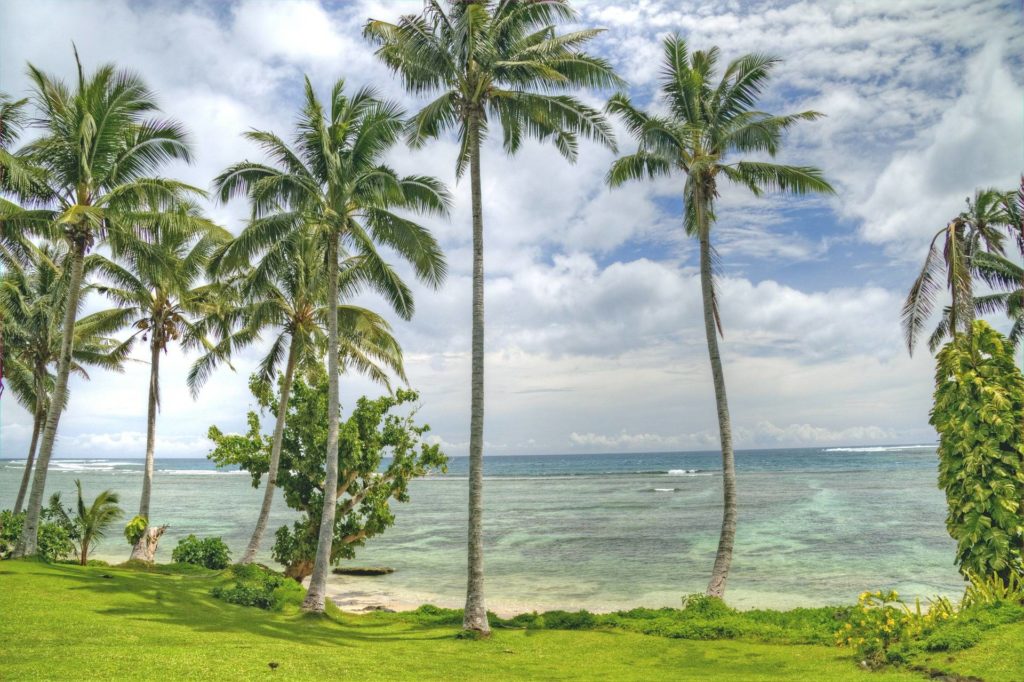
Although American Samoa has beautiful, mountainous cliffs, golden beaches, and impressive coral reefs, the country is home to a large number of unique birds and fish.
For more than two thousand years, the Samoan culture has been considered the oldest in all of Polynesia. For some 3,000 years ago, the first Samoan Islanders arrived by sea from southeast Asia. Fa’asamoa, the Samoan way, developed over time and became distinct from one culture to another.
The populated volcanic islands of American Samoa are forested with tropical rainforest. Tutuila, Ofu, and Tau are the three islands in which the park is located. This partnership is created by leasing land from seven villages and using their properties to preserve and protect 9,100 acres of land and ocean.
The only US national park in the Southern Hemisphere is the National Park of American Samoa, also known as “sacred earth.”
55. North Cascades National Park
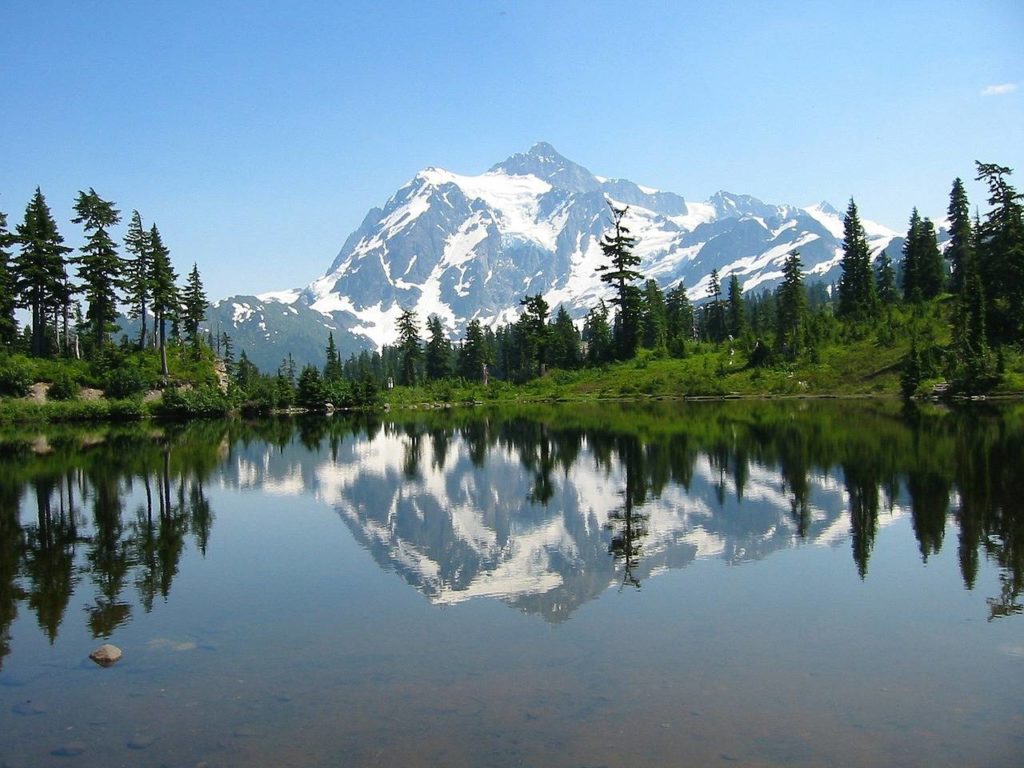
The enormous wilderness area in northwestern Washington, known as North Cascades National Park, is in the United States. To preserve stunning mountain scenery, such as snow-capped mountains, glacier-fed lakes, lush alpine meadows, and crashing waterfalls, the park was established in 1968. The region is known as the North American Alps more often than not.
The park is divided into two sections, which are referred to as units. The north unit extends all the way to the Canadian border, and the south unit extends southeast until it touches Lake Chelan National Recreation Area, which surrounds the northern portion of the fjord-like Lake Chelan. Located south of the Skagit River on the eastern side of the northern unit and part of the river valley is Ross Lake National Recreation Area, a roughly L-shaped region that encompasses Ross Lake (the impounded waters of the Skagit River) and adjacent lands on the western side of the river between the north and south units of the park.
56. Isle Royale National Park
Isle Royale National Park contains more than 850 square miles of wild wilderness, spacious lands, and aquatic life that are all found within the boundary of Lake Superior.
Isle Royale National Park has a cool climate, crystal-clear waters, and the wild North Woods forest. It incorporates 850 square miles of land that extends into Lake Superior, of which 99% is federally protected wilderness. These ridges form a long, complex chain of volcanoes that started as lava flows that were tilted and then glaciated.
With 165 miles of scenic hiking trails and 36 campgrounds for backpackers, paddlers, and recreational boaters, Isle Royale has an abundance of opportunities for hikers, paddlers, and recreational boaters. Good fishing, historic lighthouses, and shipwrecks, as well as ancient copper mining sites and places to observe wildlife, can be found in the area. Only boat or floatplane travel is permitted to Isle Royale.
57. Lake Clarke National Park
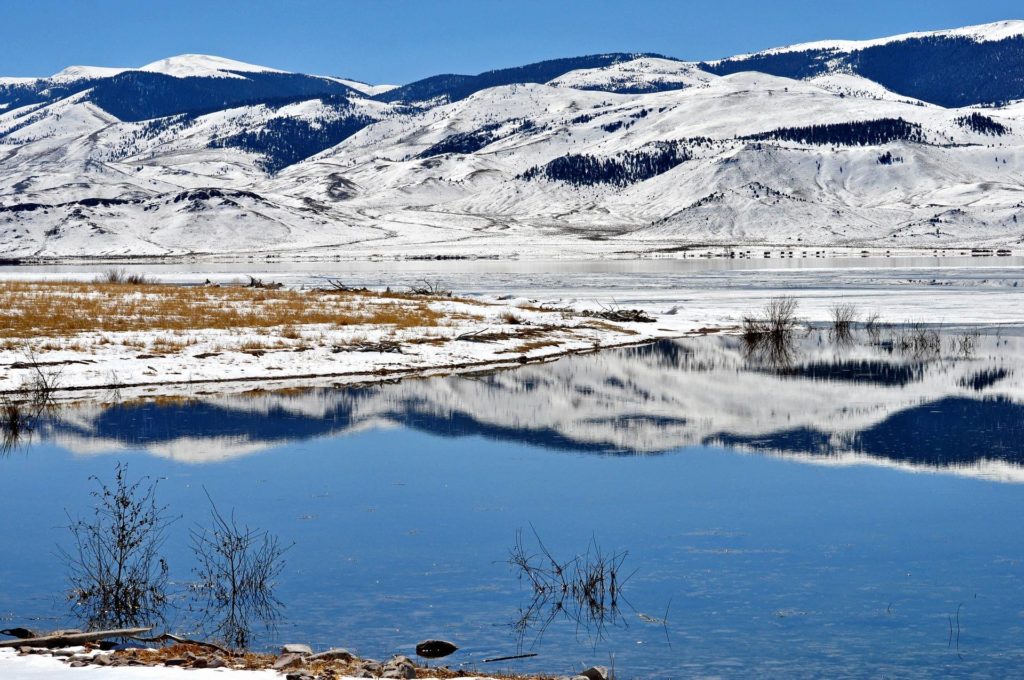
This park has lots of beautiful scenery, is easily accessible from Anchorage, and sees under 5,000 visitors annually.
An awesome array of mountains, glaciers, granite spires, thundering waterfalls, a waved-washed coastline, and the largest lake in the state can be found only 100 miles southwest of Anchorage.
Lake Clark was known as Qizhjeh Vena in Dena’ina, which means “a place where people gathered.” For thousands of years, the Athabascan Dena’ina people have lived in the Lake Clark region. Culture is supported by the land, water, and resources that it possesses. There are numerous historic and archaeological sites within the park, including the famed cabin built by outdoorsman Richard Proenneke in the early 1970s.
The park, which spans 5625 square miles from Cook Inlet to the western interior mountains, runs along the Chigmit Mountains as well as the tundra-covered hills. Lake Clark, a 42-mile-long turquoise body of water ringed in by mountains, is the centerpiece of the park. Although the Alaska Range and Aleutian Range connect, the Chigmits, where the two ranges meet, is home to Mount Iliamna, which is 10,016 feet, and Mount Redoubt, which is 10,197 feet, two active volcanoes.
58. Kobuk Valley National Park
Because the Kobuk Sand Dunes attract over a half-million caribou who migrate twice a year, follow the caribou’s migration route to find their paths. Visit the Kobuk River Valley with the local wildlife.
The important geographic features offered protection by the Kobuk Valley National Park, which is located in the central part of the Kobuk River, features of the 25-square-mile Great Kobuk Sand Dunes, and smaller dunes found in the Little Kobuk and Hunt River valleys.
While wind is one of the methods used to transport sand from the Kobuk Valley to the Bering Sea, water transport has also taken place in the Kobuk Valley because of glacial erratics in the valley. The southern part of the Kobuk Valley has mostly dunes due to the increased vegetation. Granite bluffs, which can be 150 feet high, feature the fossils of Ice Age mammals that used to stand on them.
For nearly half a million caribou, about two caribou migrations take place each year as they move through the Park; these are the animals’ migrations, not the people’s. With more than 25 square miles of Great Kobuk Sand Dunes as a backdrop, their tracks cross the landscape freely. a sculpted desert dominates an oasis of wetlands in the middle of a deserty wilderness The Kobuk River, which flows through the park on the north side, winds through the dunes for a distance of 61 miles. This provides a safe travel route for humans and wildlife.
59. Gates of the Arctic National Park
This expansive park and preserve lies north of the Arctic Circle and covers 8.4 million acres.
There are no roads connecting the various parts of Gates of the Arctic, so those who want to visit must either make an air travel or spend several days on foot. The unending and unpredictable Arctic weather is always a challenge, because of the extreme cold. Some of the most breathtaking views in the country are presented here. For the adventurous lovers of the outdoors, this is an absolute must-see.







